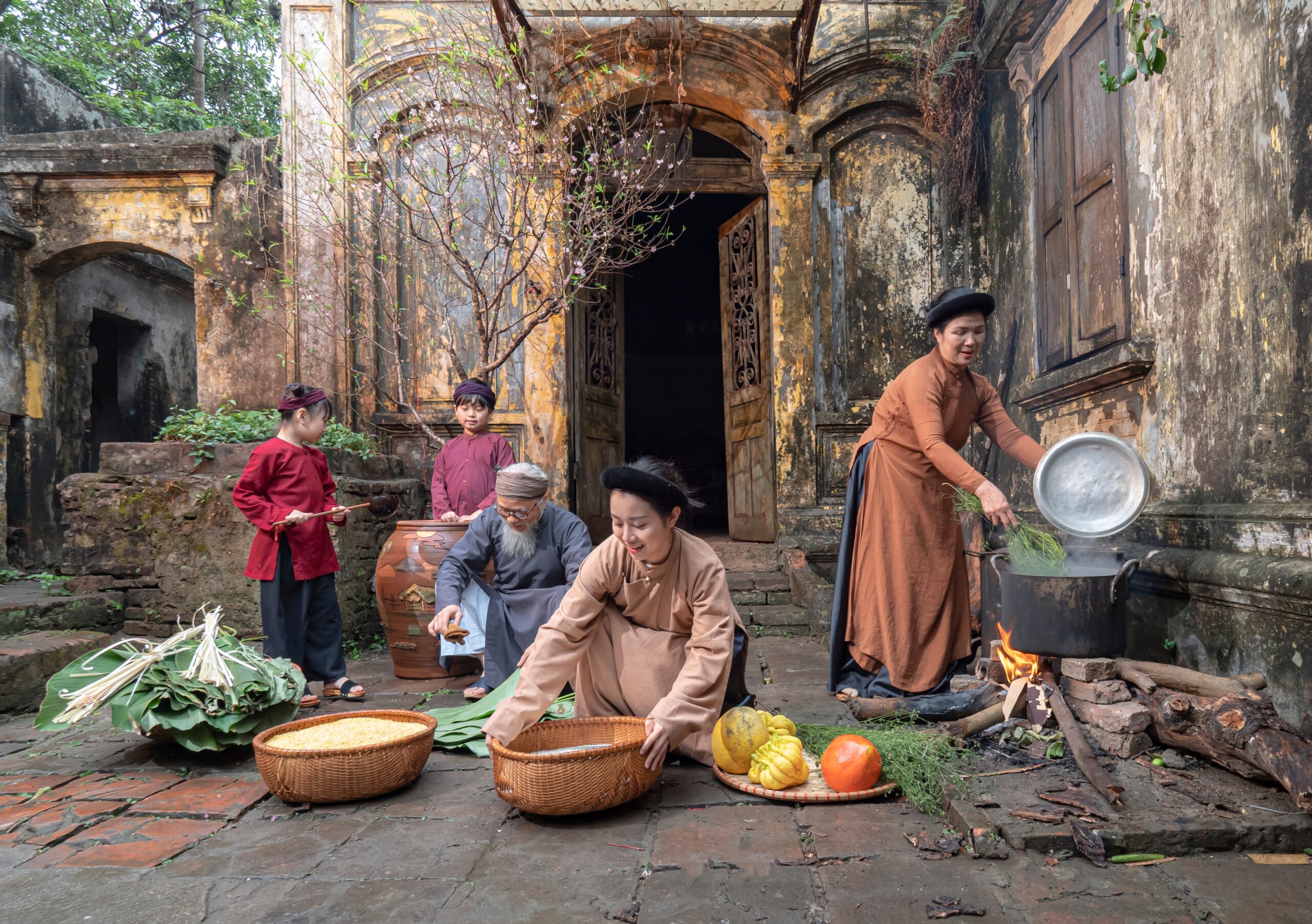
- On 15/12/2023
- In Blogs Travel Tips
- Tags:
Tet: Lunar New Year
Tết, short for Tết Nguyên Đán, Festival of the First Day is the most important celebration in Vietnamese culture. Tết celebrates the arrival of spring based on the Vietnamese calendar, which is mostly based on the lunisolar Chinese calendar and usually has the date in January or February in the Gregorian calendar.
Sources: Wikipedia, Internet. Photos by Khang Chu Long, Quang Vinh Nguyen, ShutterStock, Pexels, Pixabay, Unsplash
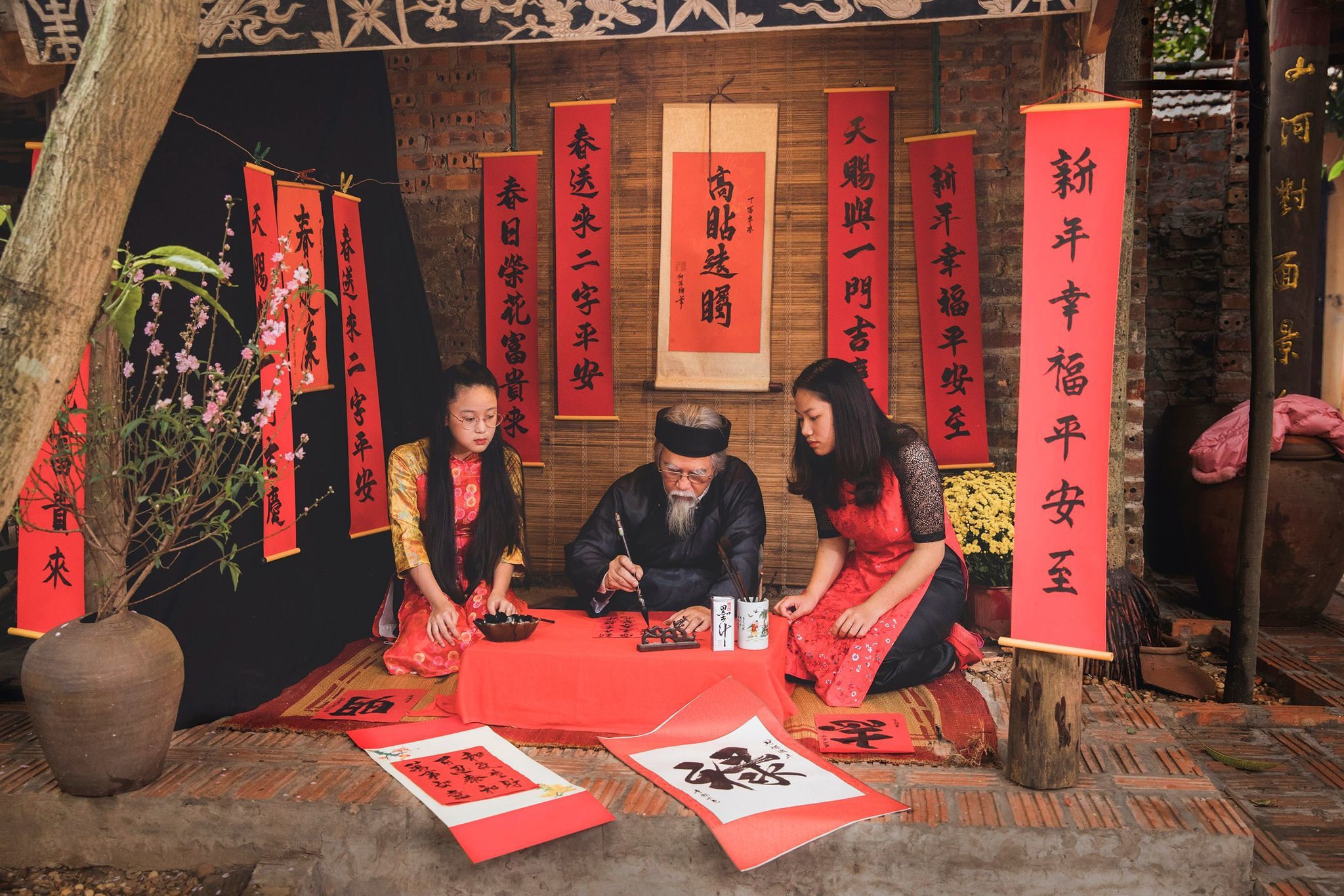
Vietnamese people celebrate Tết annually, which is based on a lunisolar calendar (calculating both the motions of Earth around the Sun and of the Moon around Earth). Tết is generally celebrated on the same day as Chinese New Year (also called Spring Festival), with the one-hour time difference between Vietnam and China resulting in the new moon occurring on different days. Rarely, the dates of Vietnamese and Chinese Lunar New Year can differ as such in 1943, when Vietnam celebrated Lunar New Year, one month after China. It takes place from the first day of the first month of the Vietnamese lunar calendar (around late January or early February) until at least the third day.
Every year, Tết is celebrated on the First Day of the first Lunar month throughout Vietnam and in a few other countries where the Vietnamese community lives. Buying peach and kumquat trees in the Northern region, or yellow apricot trees in the Central, Southern regions and Mekong Delta is considered an indispensable preparation in the days leading up to Tết. During Tết days, families gather together, visit relatives, give congratulations, celebrate new years, and worship ancestors. Tết is also an occasion for pilgrims and family reunions. They set aside the trouble of the past year and hope for a better and happier upcoming year. This festival can also be referred to as Hội xuân in vernacular Vietnamese.
Tet Holidays 2024 to 2027
🐉 Tết 2024 Year of the Dragon: First Day on 10/02/2024 in Gregorian calendar
🐍 Tết 2025 Year of the Snake: First Day on 29/01/2025 in Gregorian calendar
🐎 Tết 2026 Year of the Horse: First Day on 17/02/2026 in Gregorian calendar
🐐 Tết 2027 Year of the Goat: First Day on 06/02/2027 in Gregorian calendar
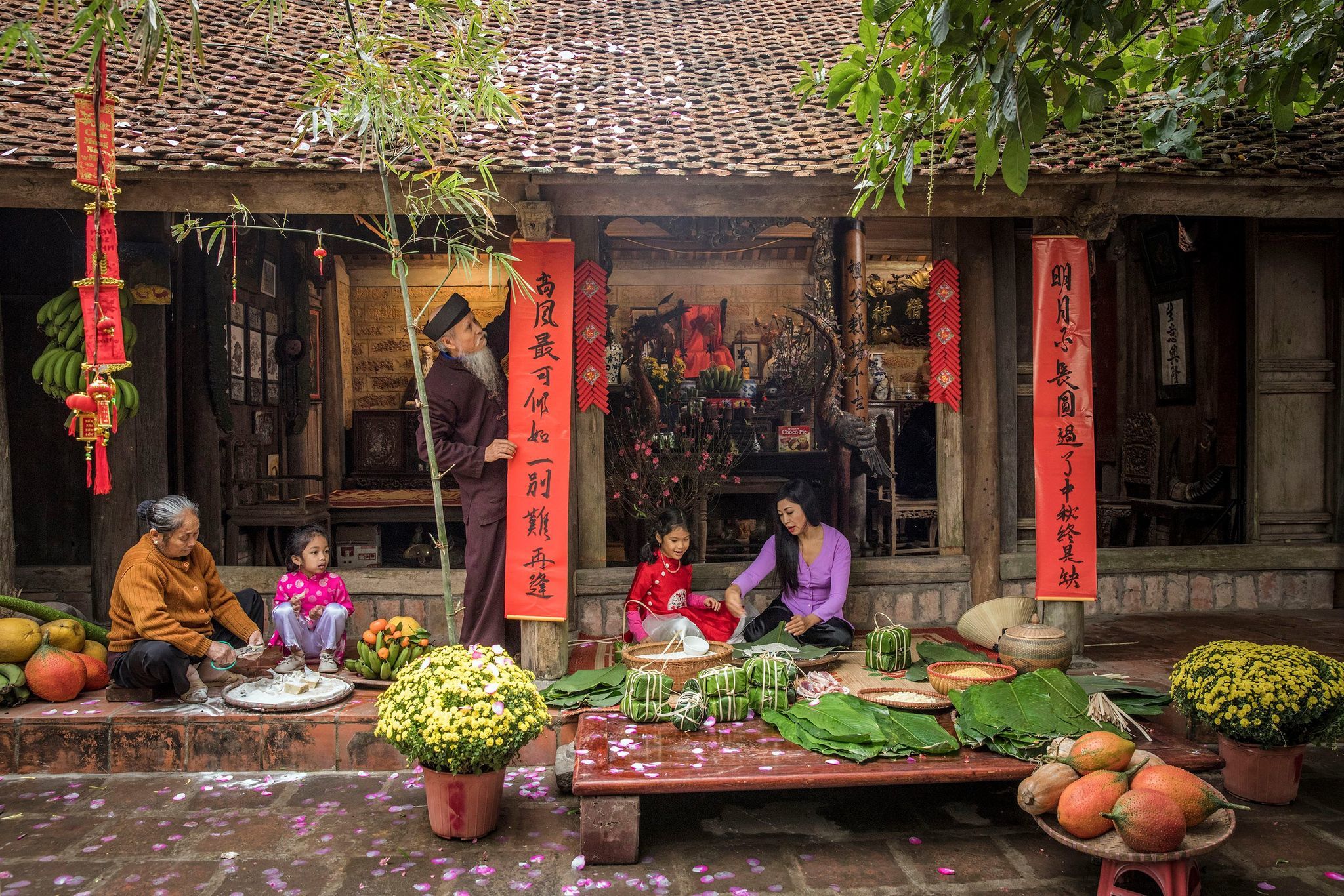
Name of Tết
The name Tết is a shortening of Tết Nguyên Đán, literally written as tết (meaning festivals; only used in festival names) and nguyên đán which means the first day of the year. Both words come from Sino-Vietnamese respectively, 節 (SV: tiết) and 元旦. The word for festival is usually lễ hội, a Sino-Vietnamese word, 禮會.
Tết Nguyên Đán is not to be confused with Tết Trung Thu, which is also known as Children's Festival in Vietnam. Tết itself only means festival but is often colloquially known as Lunar New Year in Vietnamese, as it is often seen as the most important festival amongst the Vietnamese and the Vietnamese diaspora, with Tết Trung Thu regarded as the second-most important.
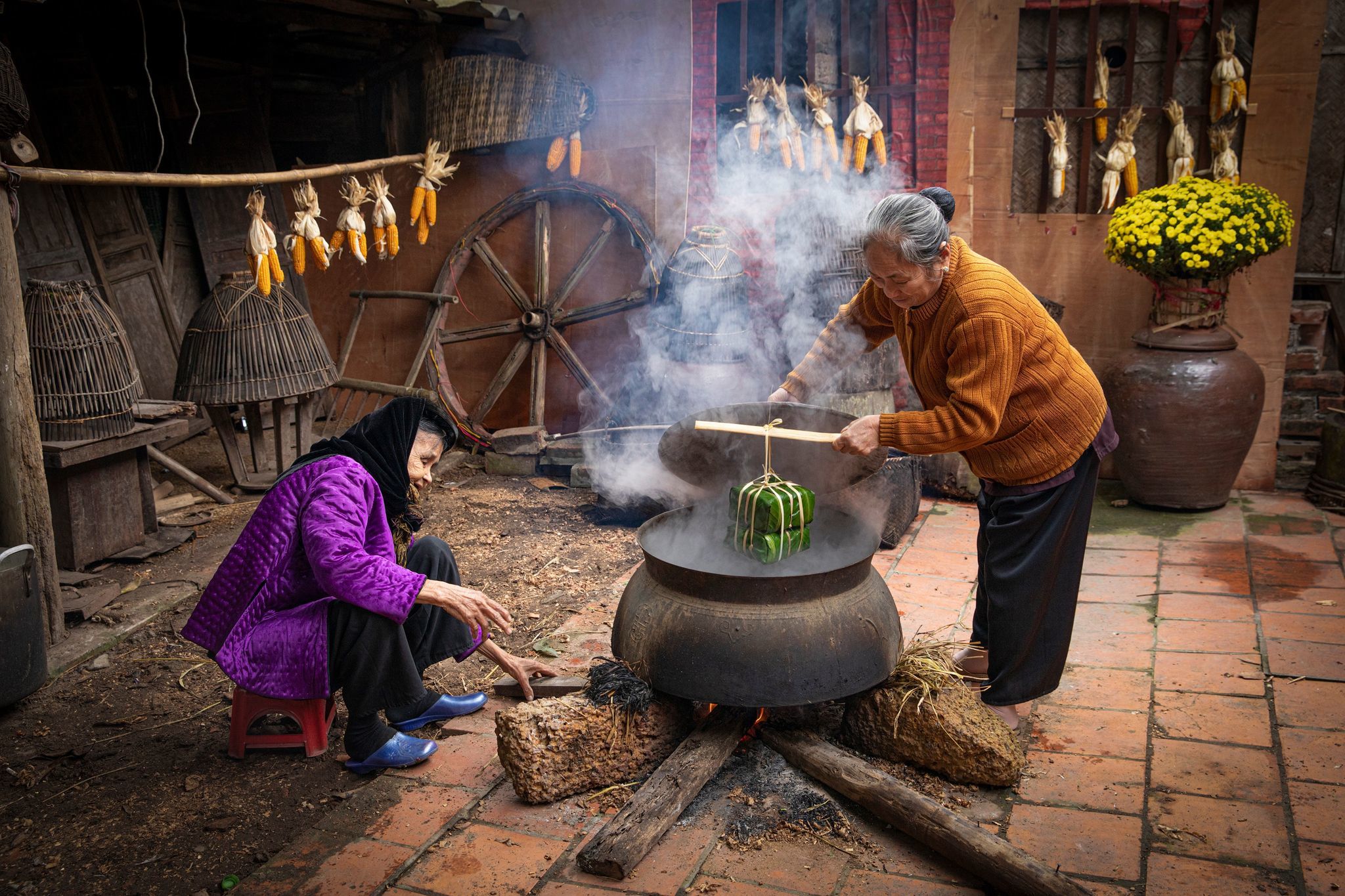
Customs
Vietnamese people usually return to their families during Tết. Some return to worship at the family altar or visit the graves of their ancestors in their homeland. They also clear up the graves of their families as a sign of respect. Although Tết is a national holiday among all Vietnamese, each region and religion has its own customs.
Many Vietnamese prepare for Tết by cooking special holiday food and doing house cleaning. These foods include bánh tét, bánh chưng, bánh dày, canh khổ qua, thịt kho hột vịt, dried young bamboo soup (canh măng), giò, and xôi (sticky rice). Many customs and traditions are practiced during Tết, such as visiting a person's house on the first day of the new year (xông nhà), ancestor worship, exchanging New Year's greetings, giving lucky money to children and elderly people, opening a shop, visiting relatives, friends, and neighbours.
Tết can be divided into three time periods, tất niên (celebrations before the end of the year), giao thừa (New Year's Eve), and năm mới (the New Year), representing the preparation before Tết, the eve of Tết, and the days of and following Tết, respectively.
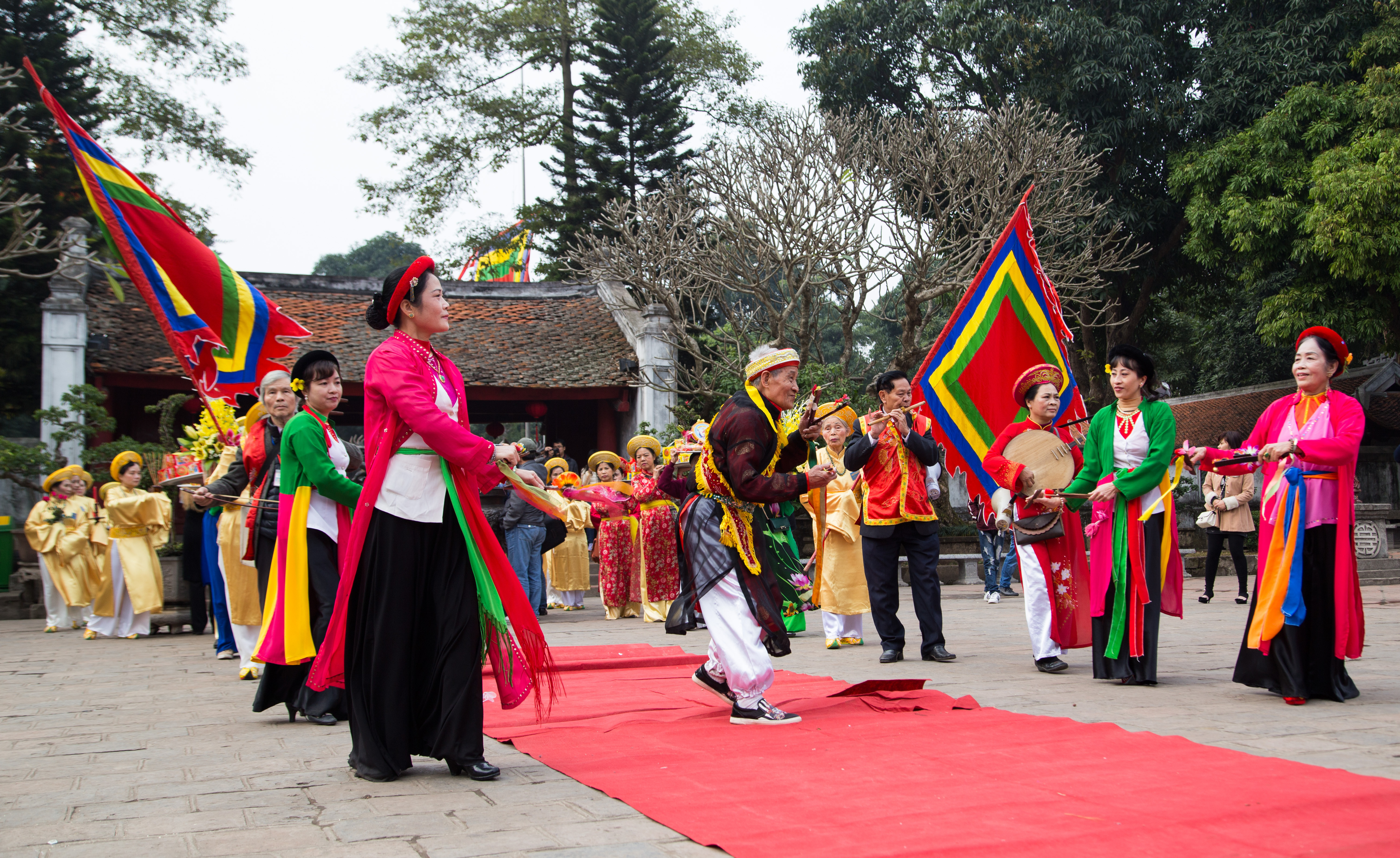
Chinese New Year is one of the most important holidays in Chinese culture, and has strongly influenced Lunar New Year celebrations of its 56 ethnic groups, such as the Losar of Tibet and of China's neighbours, including the Korean New Year Seollal, and the Tết of Vietnam, as well as in Okinawa. It is also celebrated worldwide in regions and countries that house significant Overseas Chinese or Sinophone populations, especially in Southeast Asia. These include Brunei, Cambodia, Indonesia, Malaysia, Myanmar, the Philippines, Singapore, Thailand, and Vietnam. It is also prominent beyond Asia, especially in Australia, Canada, Mauritius, New Zealand, Peru, South Africa, the United Kingdom, and the United States, as well as various European countries.
The Chinese New Year is associated with several myths and customs. The festival was traditionally a time to honour deities as well as ancestors. Within China, regional customs and traditions concerning the celebration of the New Year vary widely, and the evening preceding the New Year's Day is frequently regarded as an occasion for Chinese families to gather for the annual reunion dinner. It is also a tradition for every family to thoroughly clean their house, in order to sweep away any ill fortune and to make way for incoming good luck. Another custom is the decoration of windows and doors with red paper-cuts and couplets. Popular themes among these paper-cuts and couplets include good fortune or happiness, wealth, and longevity. Other activities include lighting firecrackers and giving money in red envelopes.
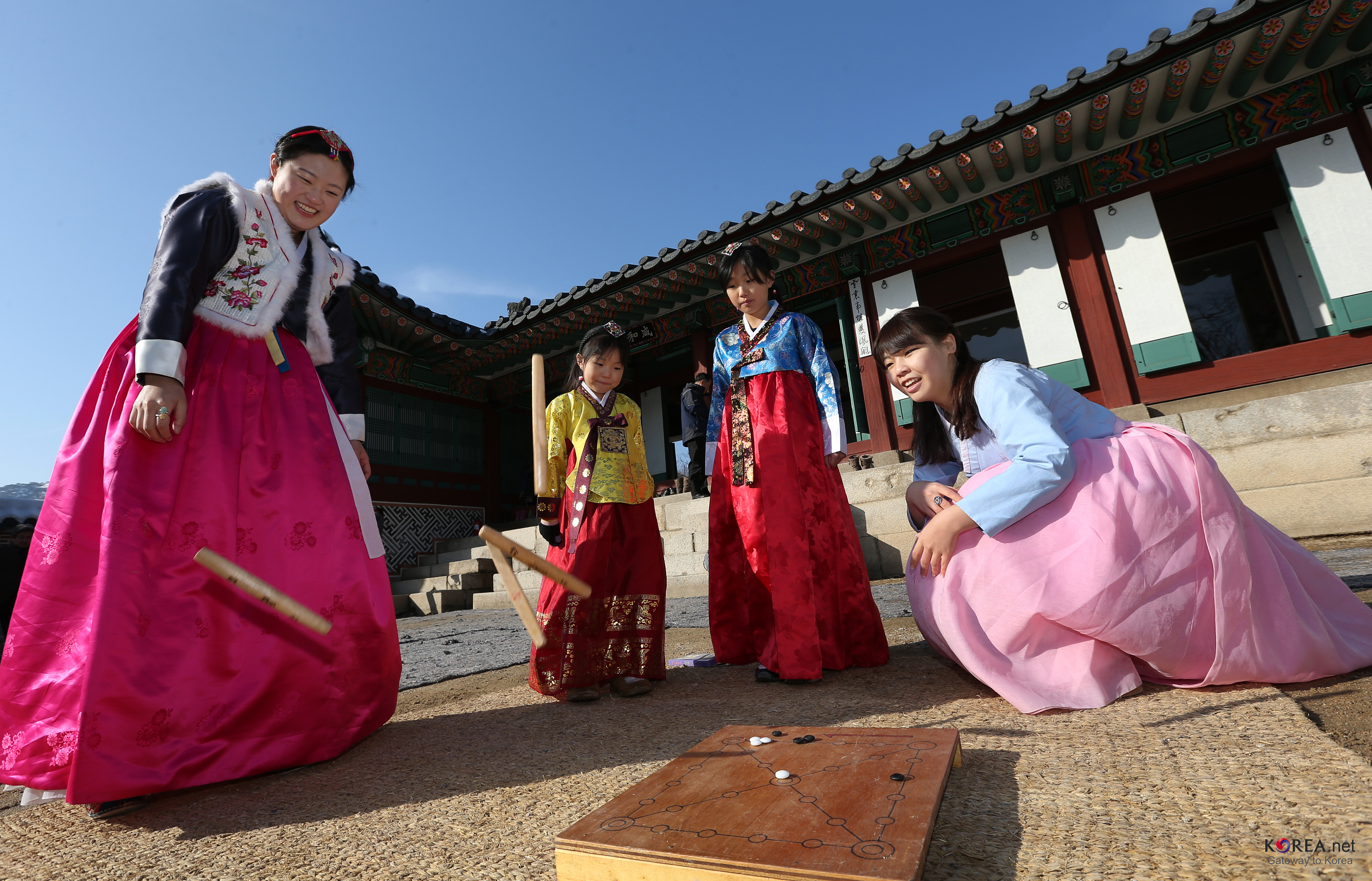
Seollal is a traditional festival and national holiday commemorating the first day of the lunisolar calendar. It is one of the most important traditional holidays for ethnic Koreans, being celebrated in both North Korea and South Korea as well as Korean diaspora all around the world.
Seol, written as (설) in Middle Korean in Hangul, means "year of age" since it is also the date when Koreans grow a year older. The modern Korean word for "age" – sal is derived from the same origin as seol. Nal 날 means day in Korean, derived from Old Korean *NAl. The Hanja term won-il (月日) is used, when referring to the date of the lunar new year of the Korean calendar itself. The Korean lunisolar calendar, like most other East Asian calendars such as that of Japan, Mongolia, Vietnam, among others, are all derived from historical variants of Chinese ones such as the Shixian calendar of the Ming dynasty. China and Japan use different terms for their respective new years, such as 正月 or 元日, which are derived from Classical Chinese.
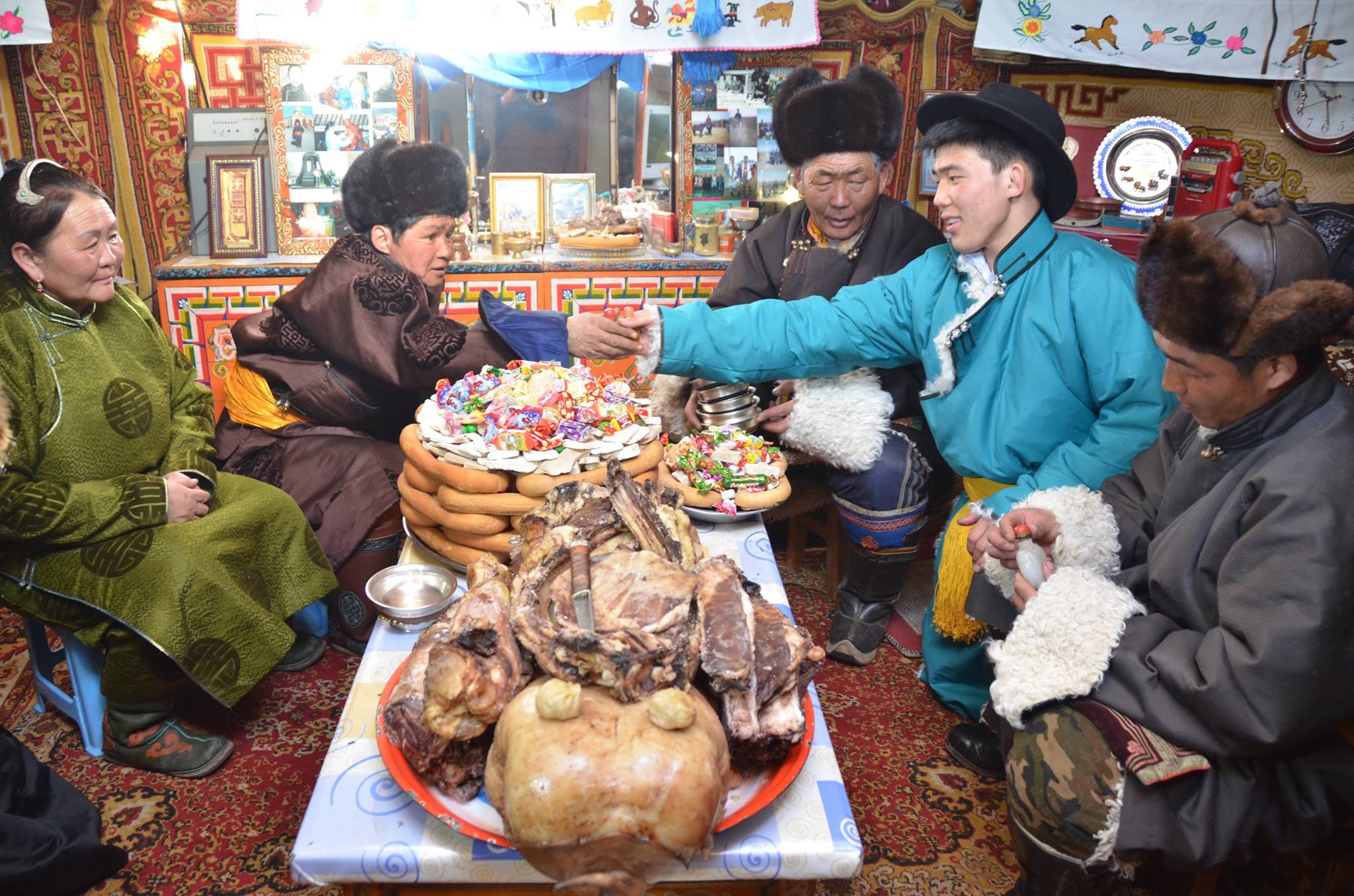
The Mongolian Lunar New Year, commonly known as Tsagaan Sar or literally White Moon), is the first day of the year according to the Mongolian lunisolar calendar. The festival of the Lunar New Year is celebrated by the Mongols and some Turkic peoples. The holiday has shamanistic influences. The White Moon festival is celebrated on the first through third days of the first lunar month. Tsagaan Sar is one of the most important Mongolian holidays. Originally, it was celebrated in spring.
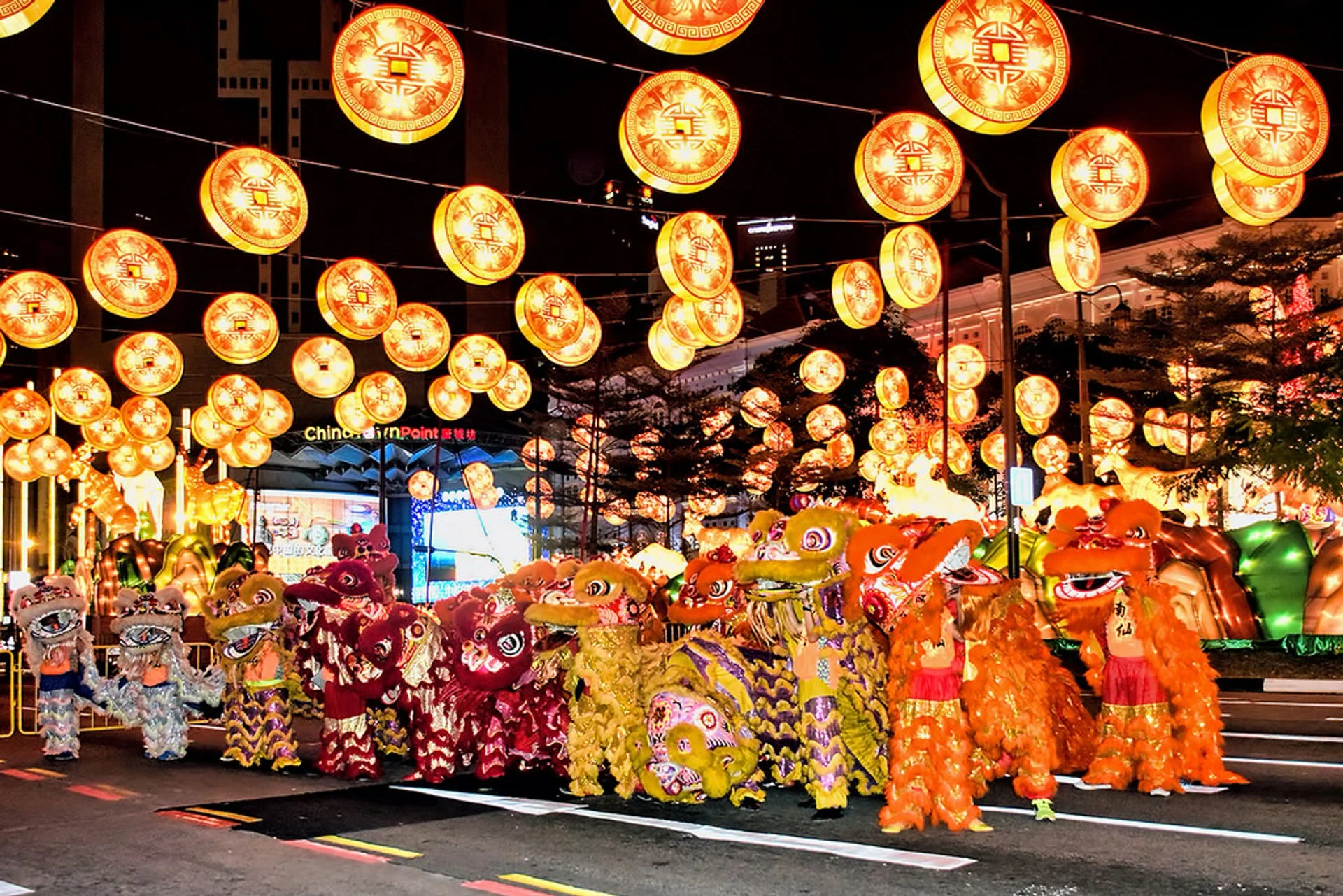
Lunar New Year is officially known as Chinese New Year in Singapore. It is celebrated in Singapore primarily by members of Chinese diaspora, who make up three-quarters of the population. They include those who are Hokkien, Cantonese and Teochew from southeastern China; Hainanese from the island province of Hainan; Hakka, a migrant group spread out all over China; and Peranakan, who have been in the region for over 400 years and also have mixed Malay and European ancestry. Each ethnic group has its own set of traditions, as well as creating new ones incorporating elements from other cultures like Malays and Indians.
While there is little recorded history of when Lunar New Year was first observed in Taiwan, it is known that the indigenous population had other ceremonies and did not originally celebrate the festival. It was likely first celebrated by the Hakka or Hoklo populations that migrated from now part of mainland China to the island during the 17th century. Due to Taiwan's population being mostly Han Chinese, its Lunar New Year celebration is very similar to that of China, especially in regards to traditions. However, in modern day, there can be more of a focus on visiting Buddhist or Taoist temples with extended family members. There are also notable variations to the food that is eaten during this time, such as the consumption of pineapple cakes and other products derived from pineapples or daikon since the latter is a homophone for good fortune in Hokkien.
The Festivals of Tết
Vietnamese people believe that on Tết, everything must be early and new. Therefore, about two weeks before Tết, families prepare for Tết. They often clean, decorate the house, buy flowers, prepare food... everything thoughtfully for Tết. In addition, all items that are unnecessary or considered to bring bad luck are also thrown away.
The Last Full-Moon Day
The full moon day of December is the full moon worshiping ceremony of the last month of the lunar year, preparing for the worshiping ceremony of the Kitchen Gods (Ông Táo, or Táo Quân) and the Lunar New Year's Eve ceremony to welcome the New Year. That's why many Vietnamese families attach more importance to this ceremony than other full-moon offerings of the year. Rituals and procedures for worshiping the full moon of the December month are also prepared more thoughtfully and thoroughly. The full moon day of December is on the 15th day of the last month of the lunar calendar, which means there are only 8 days left until Tết Ông Táo, and about half a month until the year-end worship ceremony to welcome the New Year.
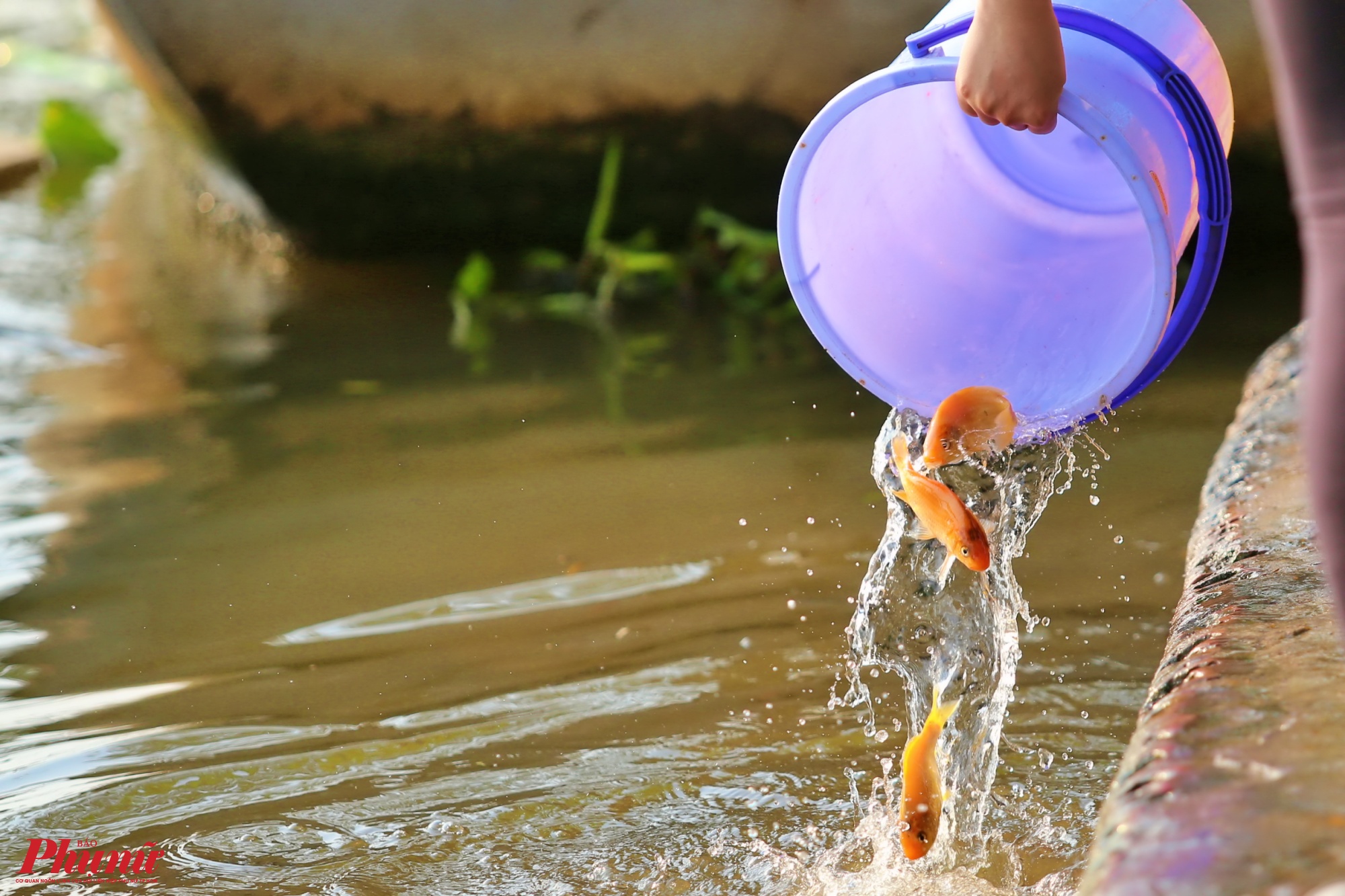
Worshiping Táo Quân, the Kitchen Gods
In Vietnamese folklore, the Kitchen Gods (Vietnamese: Táo Quân) are spirits that inhabit the kitchen of every home. They are responsible for monitoring the daily affairs of the kitchen, until the last day of the lunar year in which they then travel to Heaven to give the Jade Emperor an annual report. There are three Kitchen Gods: Trọng Cao, Thị Nhi, and Phạm Lang. Originally normal people, the three became kitchen spirits by the magic of the Jade Emperor after hearing their tragic tale. In old Vietnamese kitchens, the traditional clay stove pot is supported by three posts, which represent the three Kitchen Gods.
According to the legend of Táo Quân, some families in the countryside still preserve the custom of erecting bamboo trees, while in the city, this custom has been forgotten. According to custom, the tree is erected to protect against evil and bad omens during the time the Kitchen Gods are not on Earth. The tree is often hung or decorated with things considered to scare away evil spirits such as garlic, cacti, effigies and pandan leaves. Before Tet, Vietnamese people also prepare bánh chưng and bánh dầy, and in the South, the popular cakes are bánh tét and other hearty dishes to offer to ancestors.

The last day of December
This is the day the family gathers together to have a New Year's Eve meal. In the evening of this day, people make year-end offerings. Between the 30th or 29th of December and the 1st of January, from 11:00 pm the previous day to 1:00 am the next day, is the most important moment of Tet. It marks the transition of the old year and the new year, it is called New Year's Eve. To recognize this moment, people often make two feasts. A tray to worship ancestors at the altar in our house and a tray to worship heaven and earth in the front yard. Some communities use the tiger as an object of worship, called worshiping Ông Ba Mươi. Some other communities have a part of the feast reserved for worshiping sentient beings and homeless wandering souls.
Decorating the altar
In Vietnamese families, there is often an altar for ancestors and grandparents (also known as ancestors). The way to decorate and arrange the altar varies from house to house. The altar is a place of remembrance, a miniature world of the deceased. The two lamps represent the Sun, the Moon and the stars. An incense bowl is placed in the middle (there can be two smaller incense bowls placed symmetrically on both sides). Behind the two lamps there are usually two paper chrysanthemum branches with many small flowers surrounding the large flower.
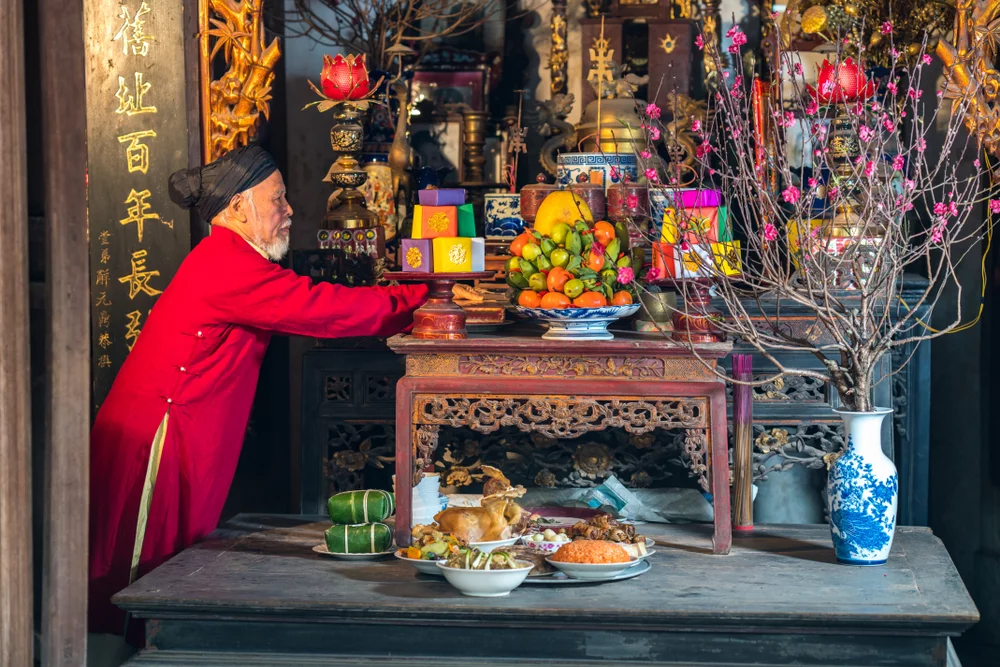
During Tet, the Vietnamese New Year celebration, the family altar is decorated with a special arrangement of fruits, and foods are left out for the ancestors. A special ceremony called the Kitchen God ceremony takes place 7 days before the new year and features a paper hat and shoes placed on the altar. The altar is always given a special place in the household. A set of chairs and a low table or a plank bed are usually placed in front of the altar, and guests are invited to sit near the altar and drink tea when they visit. [cdm.org]

The New Year in Tết
New Year's Eve is the moment of transition between the old year and the new year. During New Year's Eve, everyone in the family often gives each other the best wishes. On this occasion, localities often organize fireworks displays in spacious, airy locations.
New Year's Eve Worship is a ritual to get rid of all the bad things of the past year to welcome the good things of the coming new year. The ceremony tray is arranged to respectfully send off the Heavenly person who ruled over Him in the past year back to Heaven and welcome the new person who will take on the task of governing the Earth next year. Because the handover and takeover of the work is very urgent, you can only eat quickly or bring it with you, and even just witness the sincerity of the host. On the incense burner there is an incense burner, two oil lamps or two candles.
Offerings include pig or chicken heads, bánh chưng, bánh dầy, candies, betel and areca nuts, fruits, wine or water and votive offerings.
The exorcism ceremony is also a ceremony to expel demons, hence the word exorcism. The death ceremony is held at New Year's Eve, so it is also called the New Year's Eve ceremony.
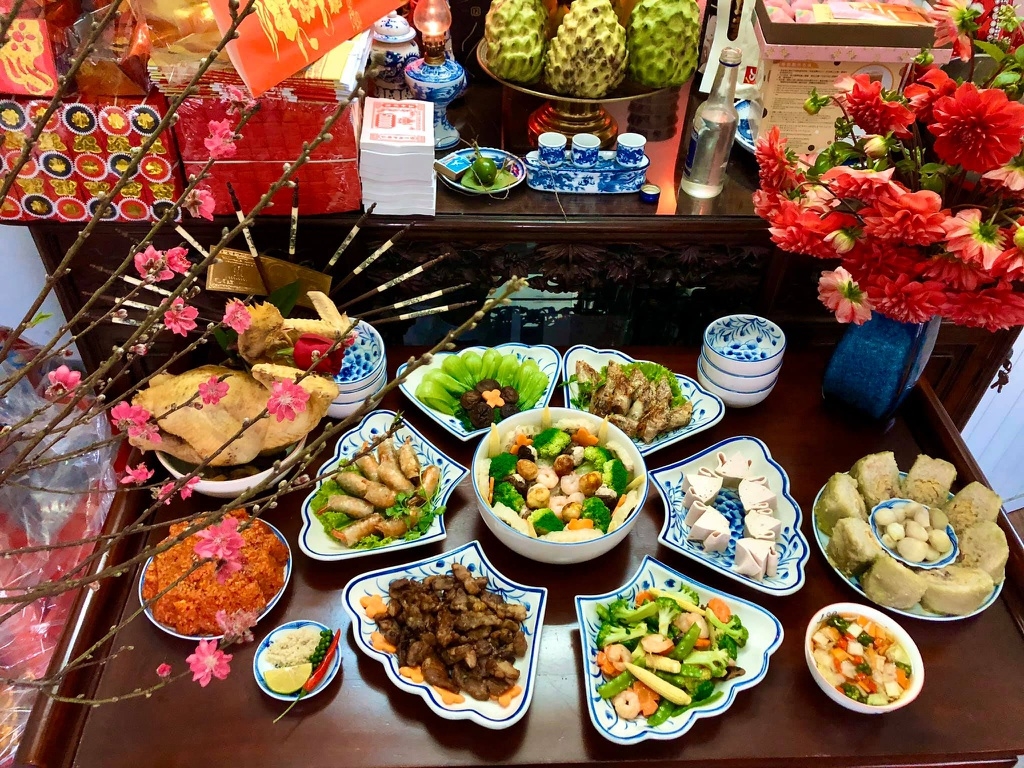
New Year's Eve Worshiping
Worshiping New Year's Eve at home is a ceremony to worship ancestors at the very moment of New Year's Eve to ask the Ancestors to bless the family with good things in the coming new year. The feast includes savoury Tết dishes prepared in a pure and dignified style. The savory feast includes bánh chưng, sausage, spring rolls, gấc sticky rice, chicken, sticky rice of all kinds, wine, beer and other drinks. Other salty dishes depending on the family's needs. Sweet and vegetarian offerings include incense, flowers, candles, candies, and Tết jam.
When worshiping New Year's Eve at home, family members often stand solemnly in front of the altar (not everyone is needed, just the homeowner and a few others) to pray to their ancestors and ask for their blessings and blessings during the year. new home and pray for prosperity and good health. Before praying to the Ancestors to invite their ancestors to celebrate Tet with their descendants, homeowners often pray to the Kitchen Gods and Land Lord to ask permission for ancestors to return to celebrate Tet. He is the ruling deity in the house.
The First Three Days
The first day of Tết is reserved for the nuclear family. Children receive red envelopes containing money from their elders. This tradition is called mừng tuổi happy age, in the North region and lì xì in the South region and Mekong Delta. Usually, children wear their new clothes and give their elders the traditional Tết greetings before receiving money. Since the Vietnamese believe that the first visitor who a family receives in the year determines their fortune for the entire year, people never enter any house on the first day without being invited first.
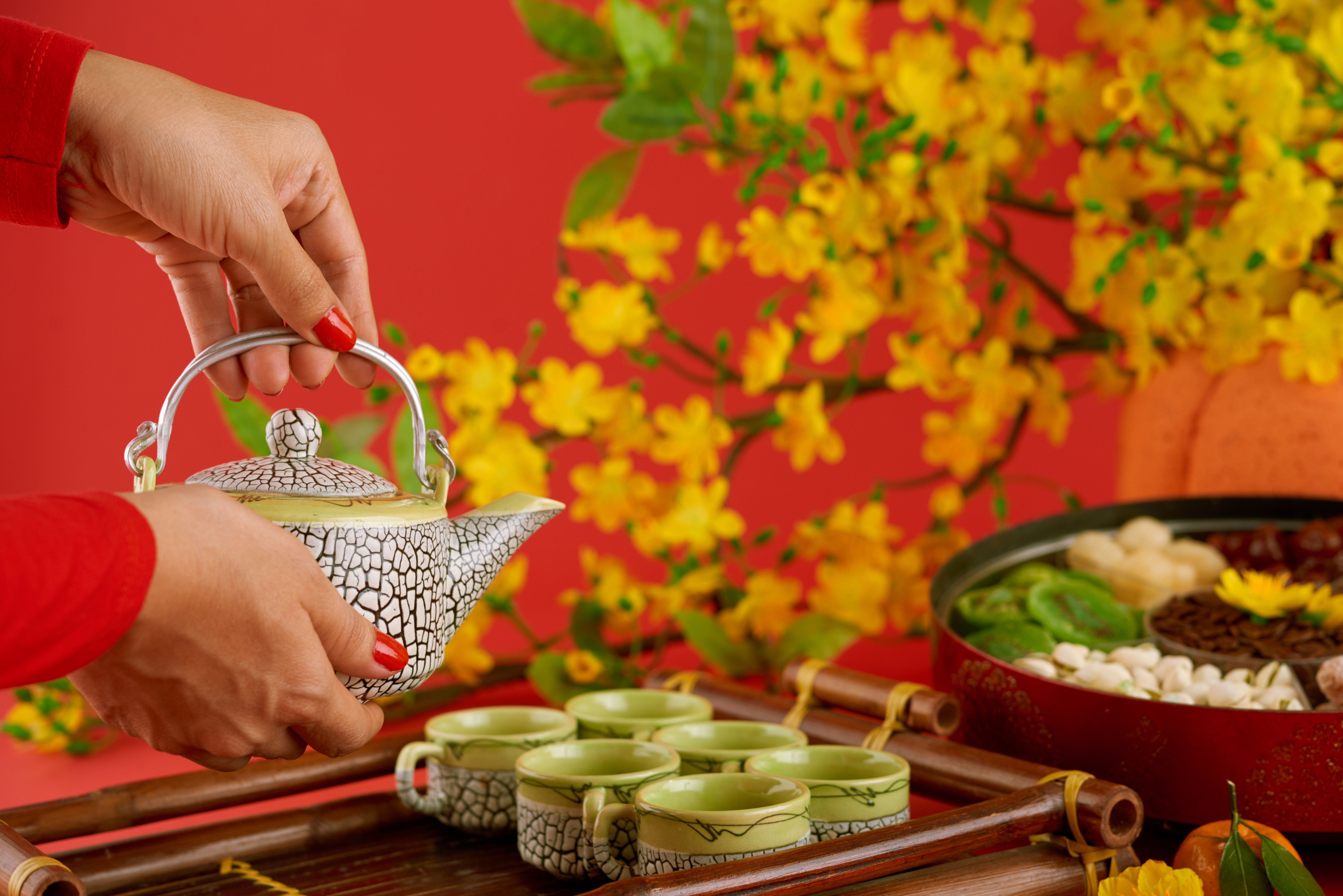
The second day of the first lunar month is the day when there are worshiping activities at home in the early morning. After that, people wish New Year to mothers according to the custom of the second day called Day for Mother. Men who are preparing to get married must also go to the house of their future wife's parents, with gifts and his best.
The third day of the first lunar month is the day after offering food at home according to the custom of offering at least three days of Tet. Students often come to wish their teachers a Happy New Year according to the custom of the third day of Tet. During these days, people often visit, return to their hometowns, and ask each other what they did in the old year and what they will do in the new year.
For the Vietnamese Catholic community, the first three days of the year they often attend mass at the church with the intention of praying for each day: On the first day, pray for Peace for the new year; on the Second day, pray for Ancestors, grandparents, parents if still alive and in memory if they have passed away; on the Third day pray for Sanctification for meritorious deeds, Food and Work will be good in the new year.
The first-foot
The verb of being the first person to enter a house at Tết is xông đất, xông nhà, or đạp đất, which is one of the most important customs during Tết. According to Vietnamese tradition, if good things come to a family on the first day of the lunar New Year, the entire following year will also be full of blessings. Usually, a person of good temper, morality, and success will be a lucky sign for the host family and be first invited into his house.
However, just to be safe, the owner of the house will leave the house a few minutes before midnight and come back just as the clock strikes midnight to prevent anyone else from entering the house first who might potentially bring any unfortunate events in the new year, to the household.
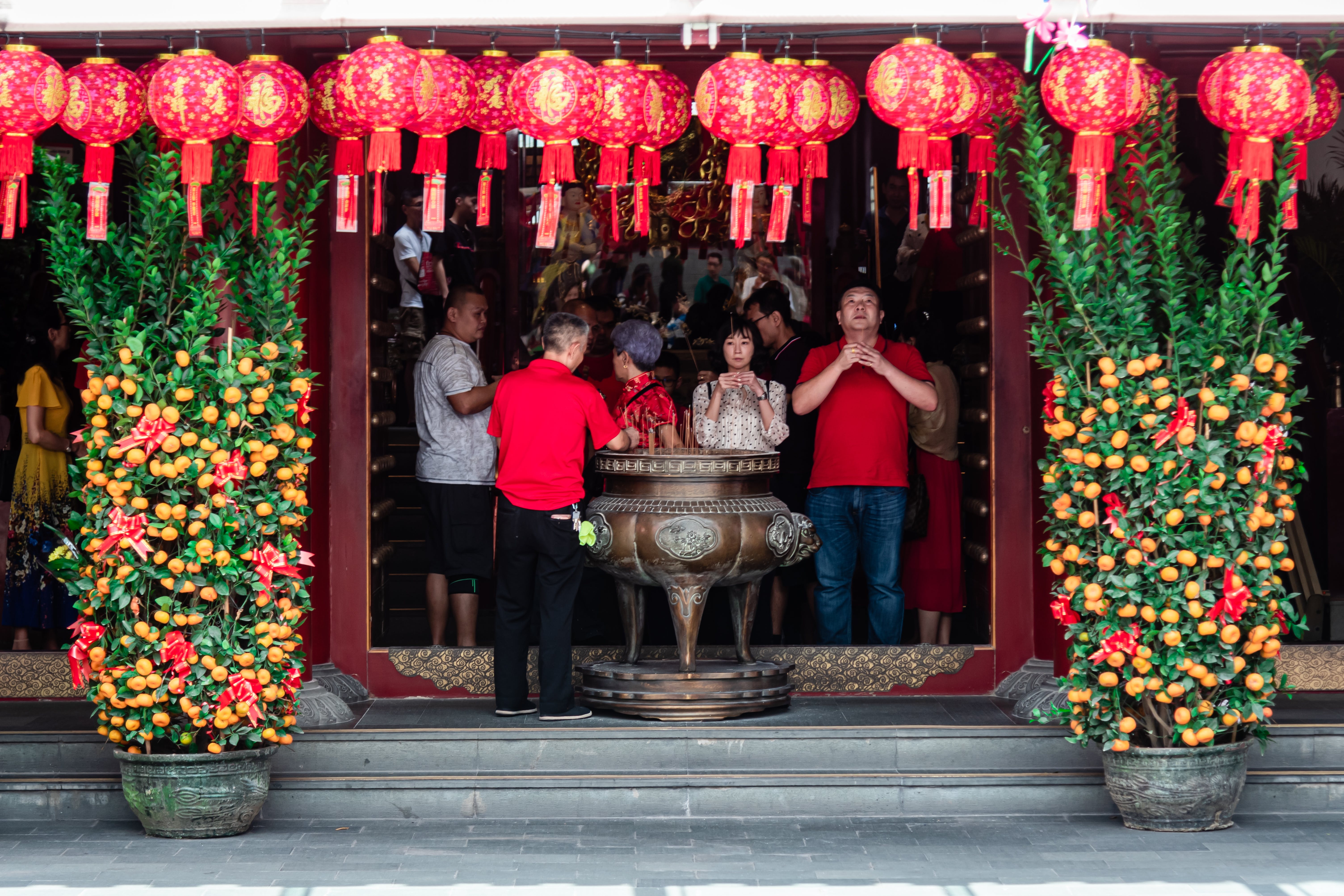
Departure and Picking buds
Picking buds is one of the customs on Tết in Vietnam. At the Lunar New Year Eve and during Tết days, people usually pick buds and go to pagodas to pray for good luck and good fortune. In Vietnamese, lộc has two meanings, the first is buds and young leaves and the second is perquisite and favour. In the phrase, hái lộc đầu xuân (picking buds on the Lunar New Year), Lộc means buds, sprouting from tree-trunks or axils.
However, today's fortune-picking has opposite concepts compared to before:
- Picking buds is not recommended because there may be bud branches that have ghosts (or souls) attached to them. When we pick up fortune, we will unintentionally bring bad luck with us. If the bad luck is good, it's okay, but if the bad luck is bad, it can make our house unlucky. This is an idealistic issue, but it also has its reason.
- Next, picking buds sometimes affects the trees in the urban landscape because everyone wants to bring a lot of buds home for good luck, so there have been many cases of destroying all the trees, affecting the environment.
- Finally, looting sometimes leads to clashes due to robbery or looting in sensitive agencies such as banks.
According to the custom, at the beginning of New Year, our grandparents would pick a bud from a banyan-tree, which are usually green all year round and planted in pagodas or communal houses at the beginning of the year to be placed on the altar to pray for prosperity, happiness, wealth and longevity for the household. Buds symbolize what has taken form and represents a long and bright future ahead. The short life of the buds should be valued and nurtured so that their vitality and beauty continues to give us hope and optimism for the future. [CPV]

Greetings
On the morning of the first day of Tết, also known as the main day, children and grandchildren gather at the patriarch's house to pay homage to their ancestors and wish their grandparents and elders. According to the concept, with each new year, each person grows one year older, so the first day of Tết is the day children and grandchildren wish their grandparents and seniors a long life (in the past, the elderly often did not remember their birth date clearly, so they only knowing that Tết is coming means growing another year older.
Visiting customs
- Visiting relatives is to bond family affection. Tet wishes are usually for good health, prosperity, good luck, all wishes will be successful... Those who encountered misfortune in the past year encourage each other to overcome the accident or to replace others, meaning in disaster also find happiness, towards goodness.
- Visit your neighbors and families living close to your family, wish them good wishes for the new year. These visits help bring people together, erase all the problems of the old year, and happily welcome the new year.
- Visit friends, colleagues and people close to you to wish them good wishes, helping to make friendships closer.
Express New Year's Day wishes
In Vietnam, red envelopes are a traditional part of Vietnamese culture considered to be lucky money and are typically given to children during Vietnamese New Year. They are generally given by the elders and adults, where a greeting or offering health and longevity is exchanged by the younger generation. Common greetings include Sống lâu trăm tuổi, An khang thịnh vượng, Vạn sự như ý and Sức khỏe dồi dào, which all relate back to the idea of wishing health and prosperity as age besets everyone in Vietnam on the Vietnamese New Year. The typical name for lucky money is lì xì or mừng tuổi.
Li xi occupies an indispensable part in Vietnam’s customs of Tet Festival, especially with children, as they will remember the fondest memories about Tet as the beginning of a wonderful year. According to a dictionary published by the Vietnamese Institution of Linguistics, li xi means Giving money to children to welcome the new age on the first day of Lunar New Year. It is a small amount of money that can bring good fortune to the upcoming year. However, li xi is not limited only on the first day, but can even last to the 9th or 10th day of Tet Festival, and given when the adults first met the kids. [vietnamonline]
A red envelope or red packet is a monetary gift given during holidays or for special occasions such as a wedding, a graduation, or the birth of a baby. Although the red envelope is from Chinese traditions, other cultures also share similar traditional customs. The red packet is also called money warding off old age for Chinese New Year.
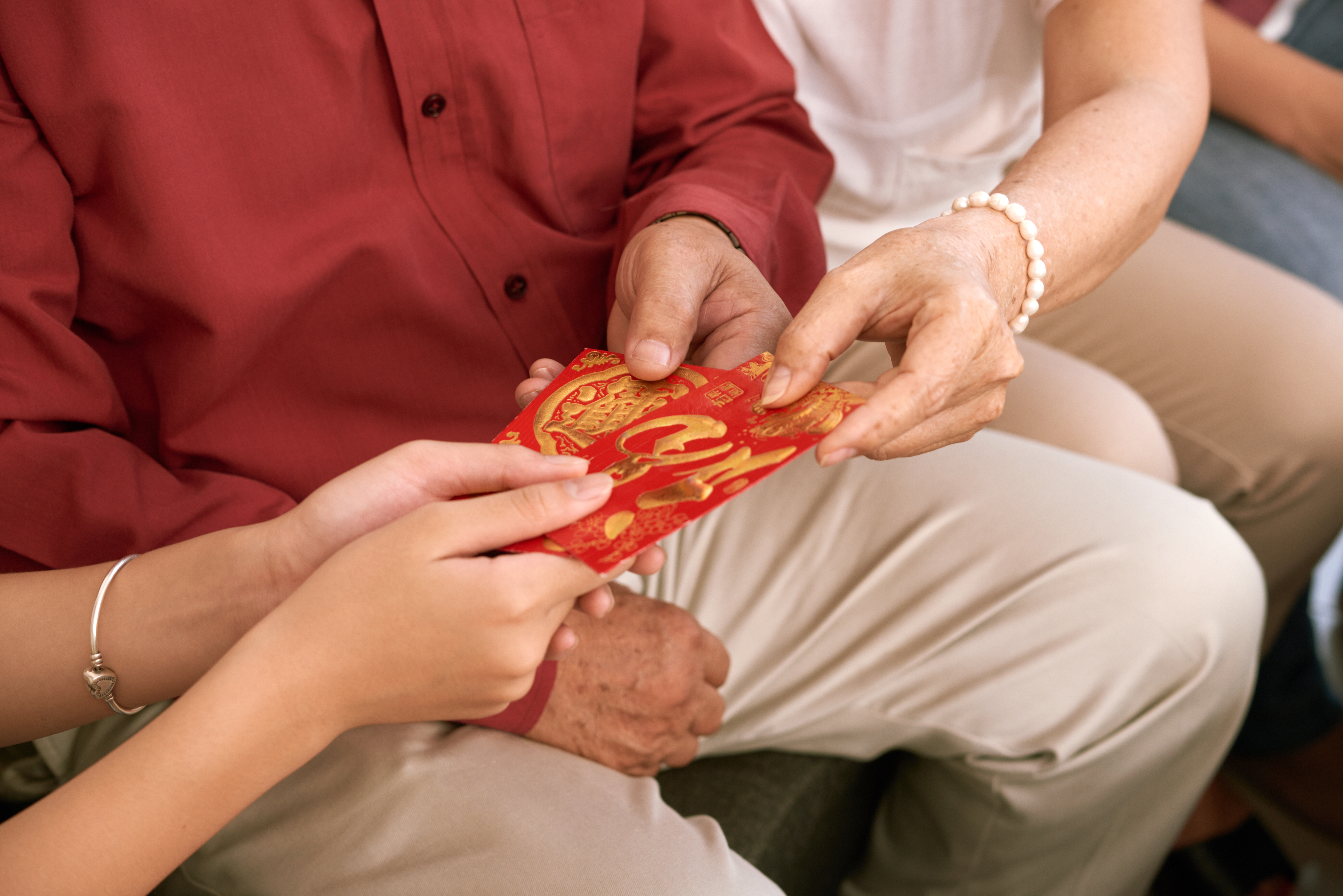
Khai hạ
The 7th day is the last day of Tet Festival series. On this day, Vietnamese people hold a ceremony to lower the Cây Nêu, called the Khai Hạ Ceremony, meaning the Opening of the New Year. This is to end Tết Festivals and to start business in the new year from the 8th or 9th of the fist month in lunar year.
Tết Shopping
Tet markets are markets with a market session before Tet from December 25 to December 30, selling many items, but the most are items serving the Lunar New Year, such as dong leaves to wrap bánh chưng, sticky rice to wrap bánh chưng or cook sticky rice, rooster, flowers and fruits, used in worship (five fruits) to worship ancestors. Because all traders will almost stop selling during Tet days, there will be no market on the first days of the new year, so they must buy to use until the market returns, leading to very high demand.
Shopping for Tet: A special tradition of Vietnamese. A Vietnamese saying goes: “Work for a whole year just to serve 3 days of Tet holiday”. That shows how important is the Lunar New Year to Vietnamese people. [VNA] — Furthermore, the Tet market also satisfies some shopping needs to enjoy and worship such as Tet flowers, fruits, especially watermelon and fruits with names that bring luck such as custard apple, coconut, papaya, mango... Special Tet markets will also end before noon on New Year's Eve.
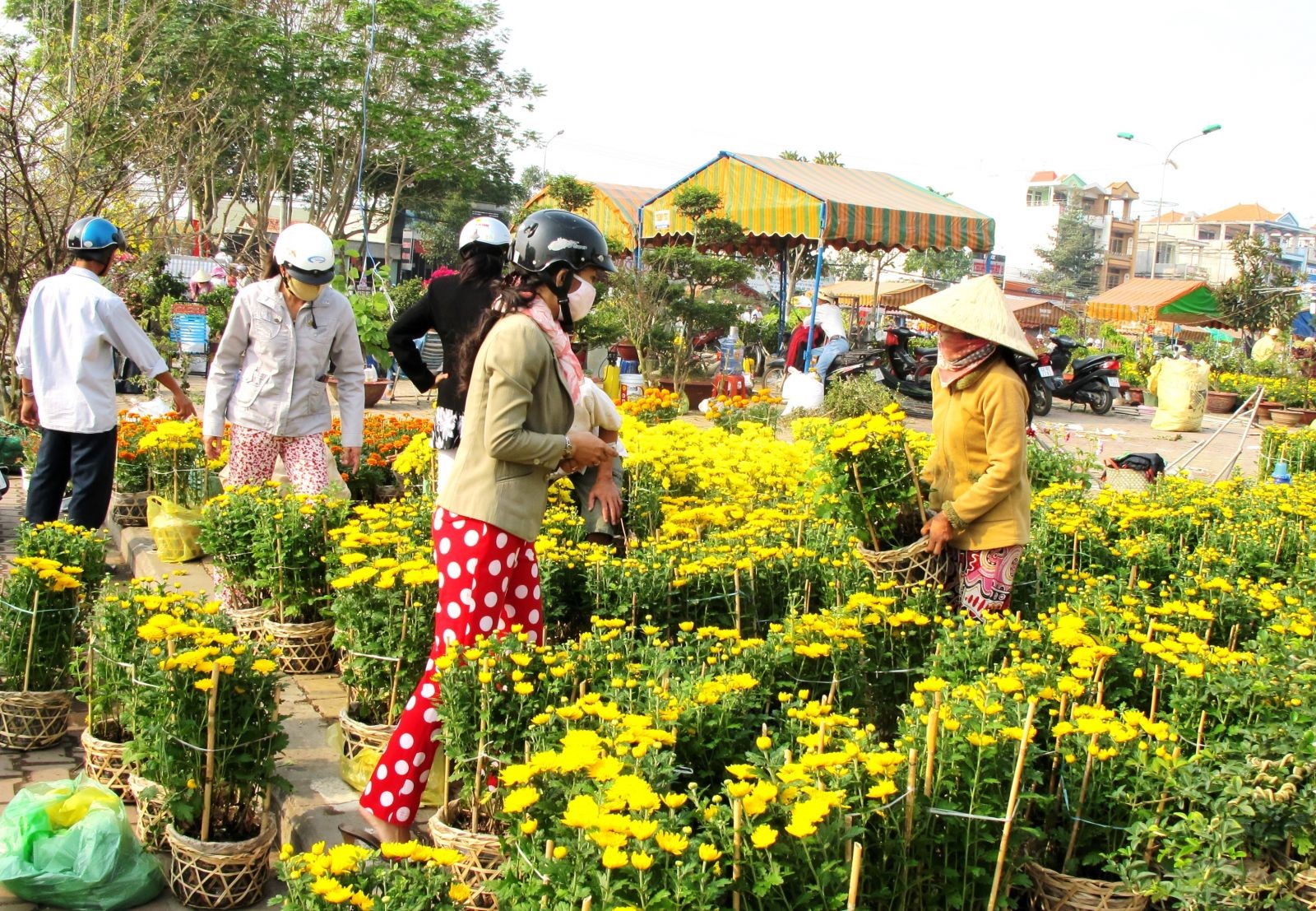
Decorate the five-fruit tray
The five-fruit tray is a fruit tray with about five different types of fruit that are often available during the Vietnamese Lunar New Year. The displayed fruits express the homeowner's wishes through their names, colours and arrangements. Choose five fruits according to the ancient concept of the five elements corresponding to human destiny. Choosing odd numbers symbolises growth and proliferation.
The five-fruit tray of Northern people includes: banana, grapefruit, peach, persimmon, tangerine or banana, chili, grapefruit, kumquat, pear. Can be replaced with oranges, pears, apples, and custard apple. In general, Northerners do not have strict customs about five-fruit trays and almost all types of fruit can be displayed, as long as they are colourful.
Like the Northerners, the Southerners' five-fruit tray does not have strict regulations on what fruits must be included, usually including soursop, figs, coconuts, papayas, and mangoes with the intention of praying for just enough figs. Southerners often abstain from eating fruits with names that have bad meanings (even when read in the correct way) such as banana as resignation, orange as bearing, durian as sadness, pomegranate as grenades... and do not choose bitter or spicy fruits.

Cây nêu
Cây nêu is a New Year tree in Vietnamese culture, made from bamboo stalk, which has the effect of warding off evil spirits during the Tết Nguyên Đán, or Vietnamese New Year.
The Viet people set up the cây nêu on the 23rd day of the 12th lunar month, to prevent the devil from coming to disturb the homeowner during the days when Ông Công - Ông Táo returned to heaven. Some other ethnic groups such as Tày and Nùng in the northern mountainous areas such as Hà Giang, Tuyên Quang, Cao Bằng, Lạng Sơn, Bắc Kạn, Lào Cai, Yên Bái again plant this cây nêu on the afternoon of the 30rd day of the 12th lunar month. Hmong people build the cây nêu in the Gầu Tào festival from the 3rd to the 5th day of the first lunar month, the 7th day of the first lunar month is the summer day, the San Diu people build the cây nêu in the Cầu Mùa Festival. Vietnamese people usually cut down a cây nêu on the 7th day of the 1st lunar month, called Lễ khai hạ.

Duilian poetry
To decorate the house and enjoy Spring, in the past, from Confucian scholars to ordinary people, people still traditionally hung red couplets on Tet holiday. These couplets are written in Chinese characters (black or yellow) on red or peach paper, so they are also called red couplets.
In Chinese poetry, a duilian is a pair of lines of poetry which adhere to certain rules. Outside of poems, they are usually seen on the sides of doors leading to people's homes or as hanging scrolls in an interior. Although often called Chinese couplet or antithetical couplet, they can better be described as a written form of counterpoint. The two lines have a one-to-one correspondence in their metrical length, and each pair of characters must have certain corresponding properties. A duilian is ideally profound yet concise, using one character per word in the style of Classical Chinese. A special, widely-seen type of duilian is the chunlian, used as a New Year's decoration that expresses happiness and hopeful thoughts for the coming year.
In addition, today there still exists the custom of asking for lucky words at the beginning of the year, with the purchase of calligraphy plates written in Chinese, Nôm, and Quốc Ngữ (Latin) characters.
Tết Flowers and Plants
In addition to the two typical flowers for Tết, peach and apricot, almost every house has additional flowers for worship and decoration. Worshiping flowers can be marigolds, chrysanthemums, gladiolus, lilies... decorative flowers come in many colours such as roses, daffodils, orchids, dahlias, violets, and gerberas. .. In addition, roses, carnations, calla lilies, lilies, bamboo shoots, heather... placed together will create richness and bring the meaning of reunion to the Tết flower vase. The main cheerful colour of the flower vase also implies a wish for a prosperous new year and a happy and prosperous family.
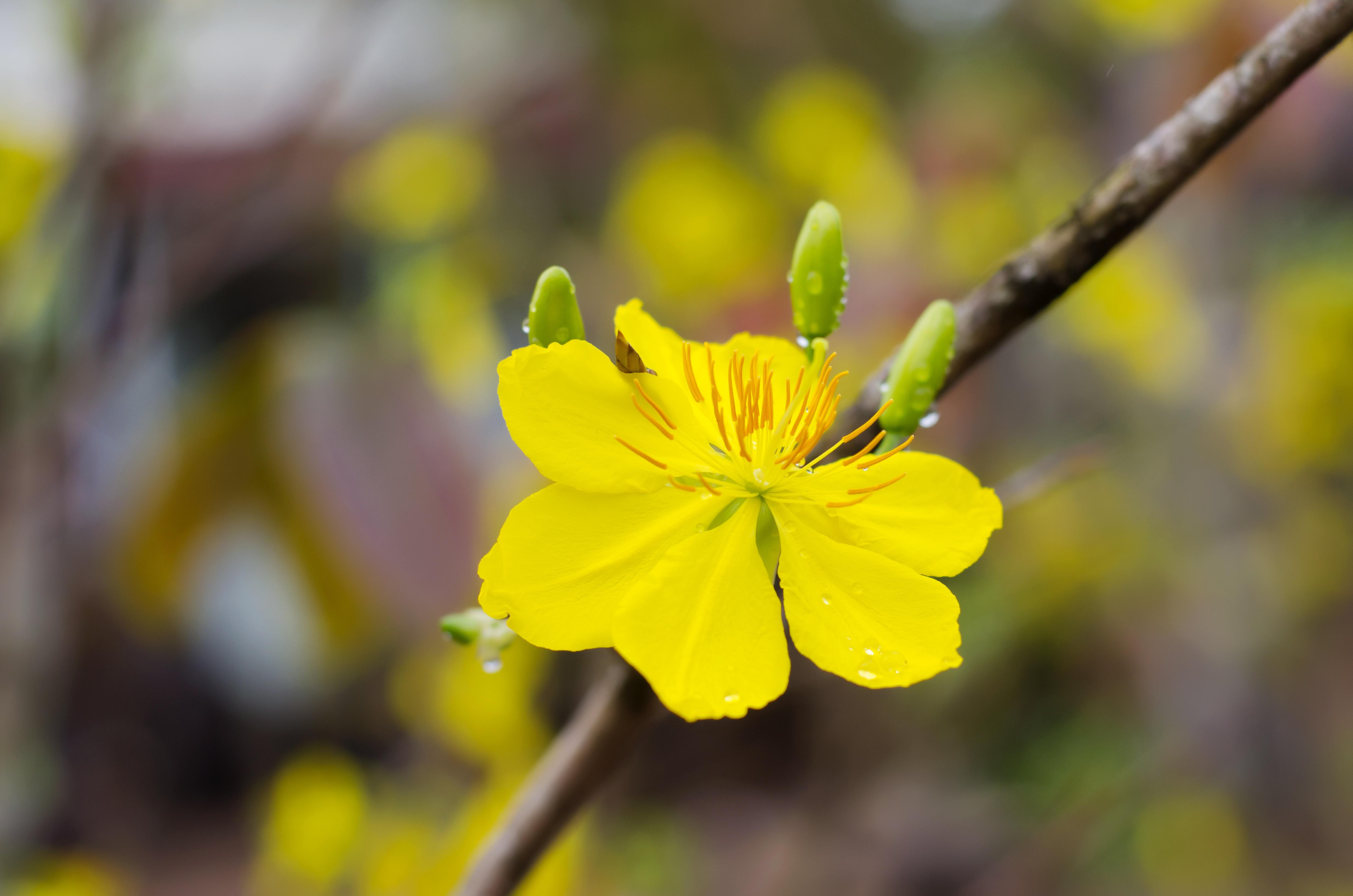
The North often chooses red peach branches to place on the altar or decorative peach trees in the house. According to Chinese beliefs, peaches have the power to exorcise ghosts and all evil, red contains strong vitality, peach color is crimson. is a prayer and blessing for the beginning of spring.
Apricot flowers, in the South of Vietnam, are located in a tropical climate that is very suitable for the environment for apricot flowers to bloom every spring and Tet. The Central and Southern regions often use yellow apricot branches more than the North. Yellow symbolises nobility and glory, and yellow also symbolizes the king (feudal times). Yellow belongs to the Earth element in the Five Elements. According to the Vietnamese perspective, Earth is in the center and yellow symbolises the development of the race. For Southerners, if apricot blossoms bloom right on New Year's Eve or in the early morning of the first day of Tet, it means that luck, prosperity, and happiness will come to the whole family that year.
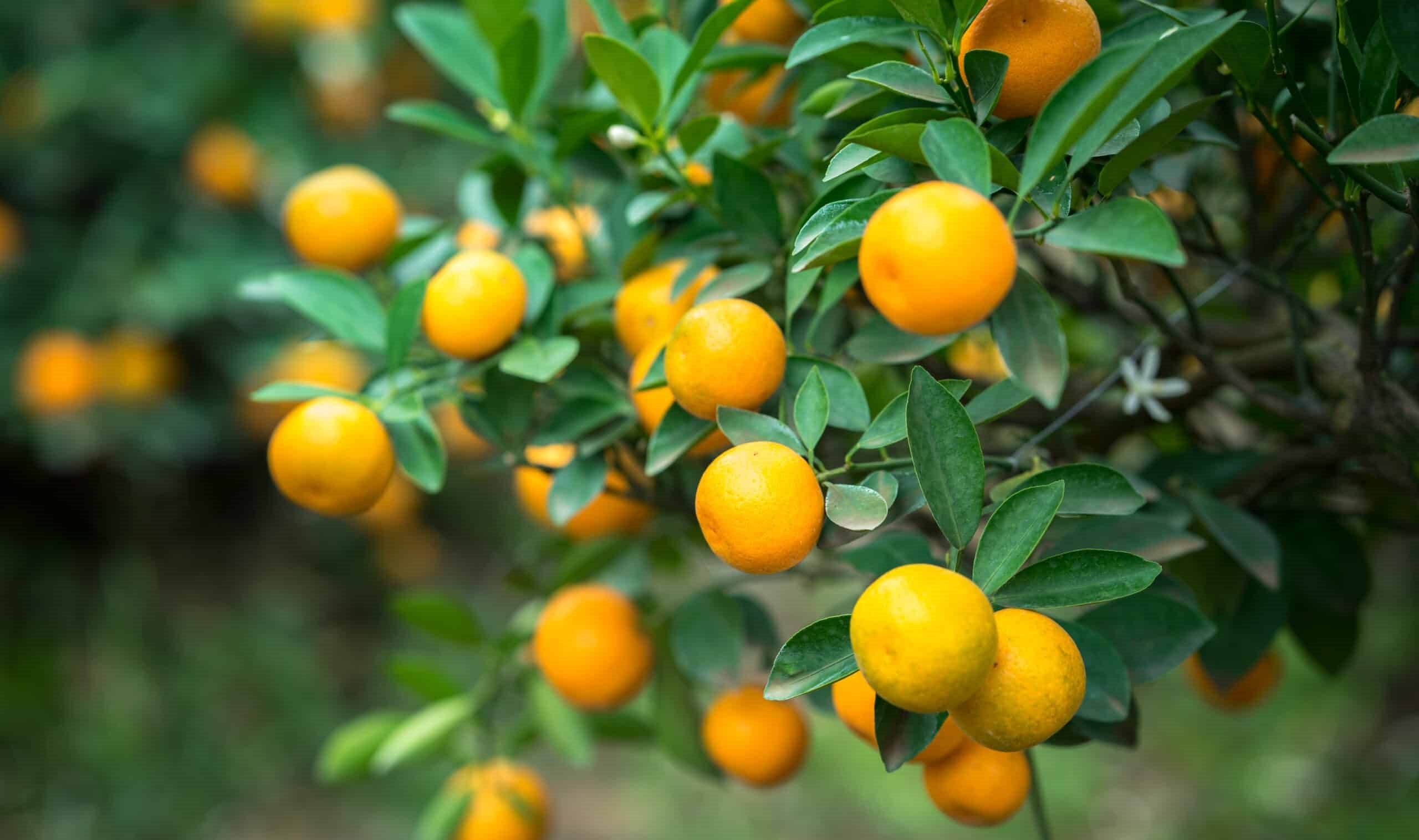
Marumi kumquat bears different story. A tree with all five characteristics: full of fruits, flowers, leaves, branches and roots is a symbol for wealth and happiness for the new year. The tips for choosing a good plant are generated accordingly: the tree must have both ripe and green fruits, mature leaves and new bud, which represents wealth and luck brought to the family in the new year.

Tết Culinary
In the Vietnamese language, to celebrate Tết is to ăn Tết, literally meaning "eat Tết", showing the importance of food in its celebration. Some of the food is also eaten year-round, while other dishes are only eaten during Tết. Also, some of the food is vegetarian since it is believed to be good luck to eat vegetarian on Tết. Some traditional foods on Tết include the following:
Besides the decorated stuff and ornamental plants, food is the most important item for Tet as the belief of meals in Tet are the most festive meals each year.
- Bánh chưng and bánh tét: essentially tightly packed sticky rice with meat or bean fillings wrapped in dong leaves (Phrynium placentarium). When these leaves are unavailable, banana leaves can be used as a substitute. One difference between them is their shape. Bánh chưng is the square-shaped one to represent the Earth, while bánh tét is cylindrical to represent the moon. Also, bánh chưng is more popular in the northern parts of Vietnam, bánh tét is more popular in the south. Preparation can take days. After molding them into their respective shapes (the square shape is achieved using a wooden frame), they are boiled for several hours to cook. The story of their origins and their connection with Tết is often recounted to children while cooking them overnight.
Hạt dưa: roasted watermelon seeds, also eaten during Tết
Dưa hành: pickled onion and pickled cabbage
Củ kiệu: pickled small leeks
Mứt: These dried candied fruits are rarely eaten at any time besides Tết.
Kẹo dừa: coconut candy
Kẹo mè xửng: peanut brittle with sesame seeds or peanuts
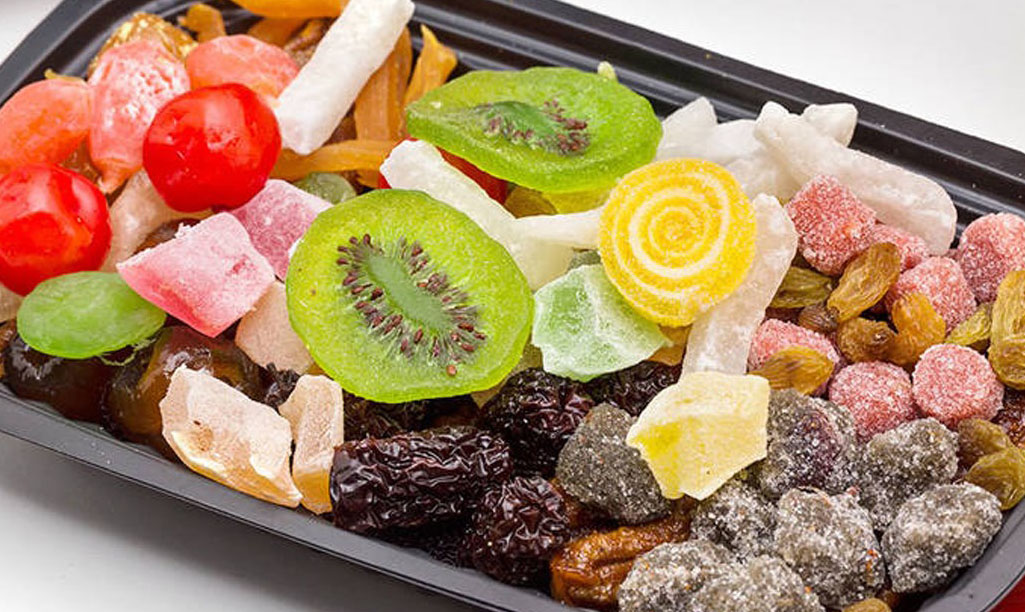
- Cầu sung dừa đủ xoài: In southern Vietnam, popular fruits used for offerings at the family altar in fruit arranging art are the custard-apple (mãng cầu), coconut (dừa), goolar fig (sung), papaya (đu đủ), and mango (xoài), since they sound like cầu sung vừa đủ xài, meaning: Praying for enough
- Thịt kho nước dừa: Meaning meat stewed in coconut juice, is a traditional dish of pork belly and medium boiled eggs stewed in a broth-like sauce made overnight of young coconut juice and nước mắm. It is often eaten with pickled bean sprouts and chives, and white rice.
- Tết drink: The most popular is still wine. Traditional ethnic wines such as fragrant sticky rice wine, yellow sticky rice wine (Kinh people), upland sticky rice (Thai people), black sticky rice (Muong people), San Lung wine, corn wine (H'Mong people, Dao people) ), Mau Son wine (Tay people, Nung people), Bau Da wine (Central region), De wine (Southern region)... are often used. After meals, people often drink green tea. Nowadays there are also Western wines, beer and soft drinks.
- Tết feast: During Tết, Vietnamese people often organise large meals, called feasts. The dishes in many families in the North may include boiled chicken, pork skin, bamboo shoot soup, pork leg with shiitake mushrooms, vermicelli cooked with chicken intestines, fried spring rolls, sticky rice with gấc, sticky rice with beans, chicken, frozen meat, stir-fried dishes. , pork sausage, pork sausage, salad, pickled onions...; Hue people celebrate New Year's Eve meal often includes sticky rice, roasted pork, fried perch, and vegetable soup (or bitter melon soup). and offerings to ancestors, often containing potatoes, cassava, peanuts and tea.
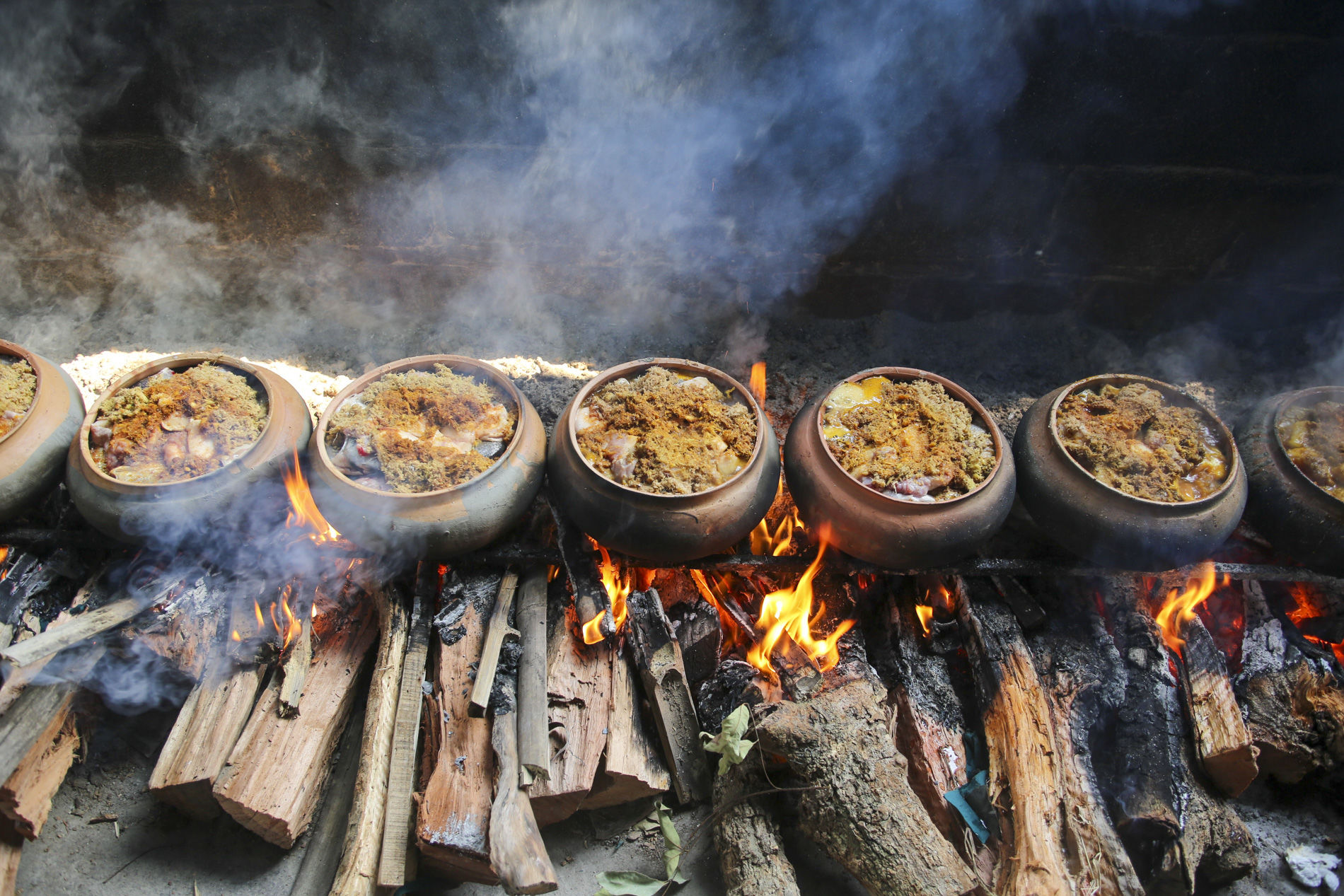
- Ở làng Vũ Đại, Hà Nam phải có món cá kho, ở làng Sơn Vi, Phú Thọ thường có thêm chè lam, người dân Quảng Nam phải có bánh tổ Hội An.
- Ngoài ra, các gia đình miền Nam thường có thêm nồi thịt kho nước dừa (thịt kho rệu) và nồi khổ qua hầm và nem bì, dưa giá miền Nam, củ kiệu ngâm, bánh tráng (để quấn) để ăn mấy ngày Tết.
- Miền Bắc có cơm rượu và thịt đông, dưa hành và ngày trước có chè kho, mọc vân ám, thang ngày Tết, hiện nay ít được biết đến.
- Miền Trung có dưa món và món tré, giống giò thủ của miền Bắc nhưng nhiều vị củ riềng, thịt chua và tai heo, người Huế có thêm món me ngâm đường.
- Thông thường, người nội trợ miền Nam lục tỉnh nghỉ ngơi, không nấu nướng trong ba ngày Tết, mà chỉ dùng thức ăn đã được chuẩn bị sẵn trước Tết.
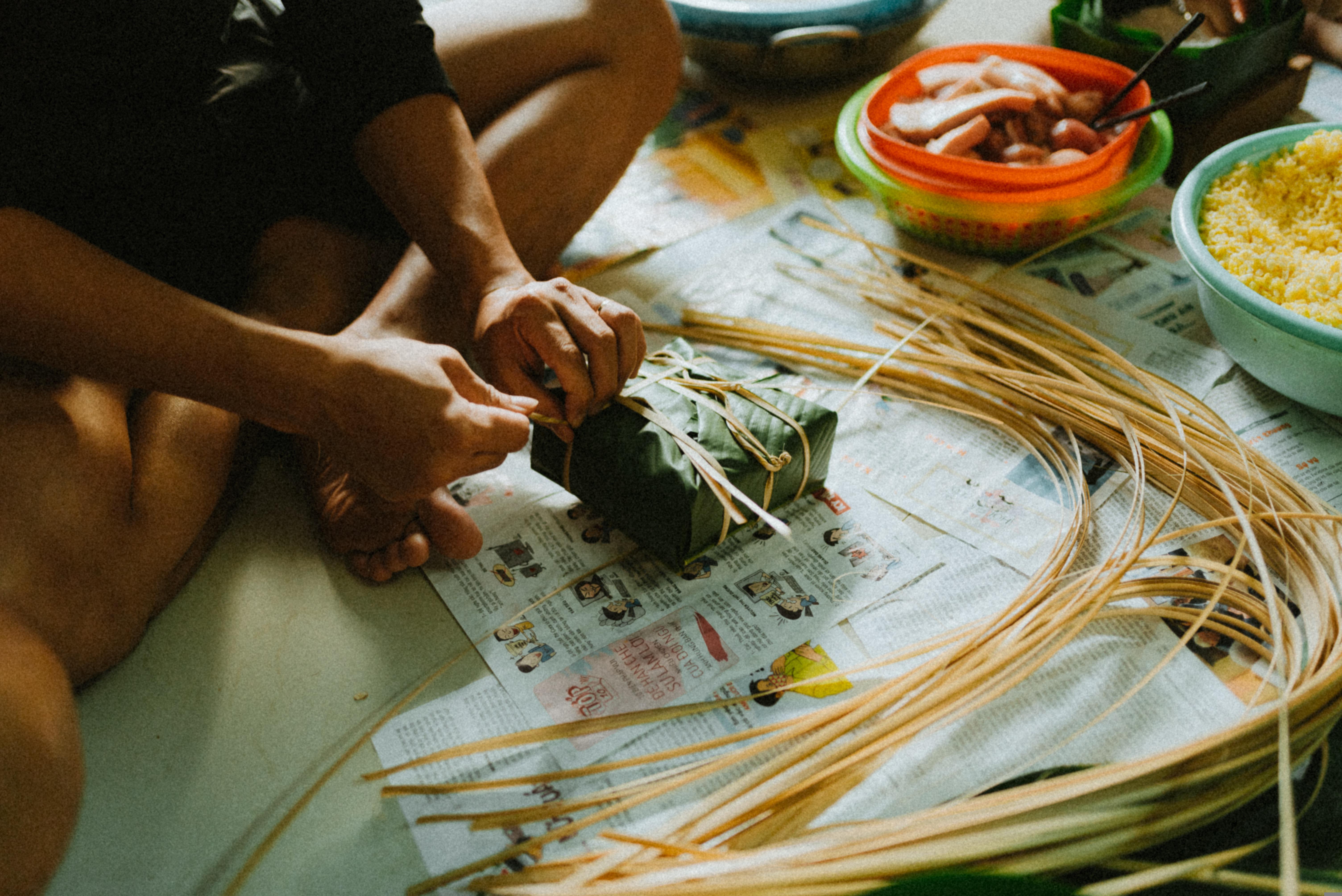
Tết Music
Dịp Tết là dịp vui vẻ nên không thể thiếu âm nhạc. Trong Tân nhạc Việt Nam có rất nhiều ca khúc sáng tác về chủ đề Tết và mùa Xuân. Trước đây có nhiều ca khúc xưa nổi tiếng như Ly rượu mừng, Đón xuân của Phạm Đình Chương, Xuân và tuổi trẻ của La Hối, Xuân họp mặt của Văn Phụng, Xuân đã về của Minh Kỳ, Anh cho em mùa xuân của Nguyễn Hiền, Mùa xuân đầu tiên của Tuấn Khanh…
Trong thời chiến tranh Việt Nam, có những ca khúc hùng ca cho người chiến sĩ, nung đúc tinh thần họ như bài Xuân chiến khu của Xuân Hồng ở miền Bắc, nhưng cũng có những ca khúc buồn nói về sự xa cách như Xuân này con không về của bộ ba nhạc sĩ Trịnh Lâm Ngân ở miền Nam.
Thập niên 90, nhiều ca khúc vui tươi đã được phổ biến như Mùa xuân đầu tiên của Văn Cao, Thì thầm mùa xuân của Ngọc Châu, Hoa cỏ mùa xuân của Bảo Chấn, Lắng nghe mùa xuân về của Dương Thụ, Ngày Tết quê em của Từ Huy, Mùa xuân ơi của Nguyễn Ngọc Thiện, Điệp khúc mùa xuân của Quốc Dũng…

Phong tục, tập quán ngày Tết
- Mua và xin câu đối trước Tết: Nhiều người ta mua một câu đối hay hoặc một vài bức thư pháp chữ Hán, chữ Nôm, chữ Quốc ngữ mang ý nghĩa cầu an, cầu tài lộc cho năm mới.
- Mâm ngũ quả và bàn thờ gia tiên: Được bày biện cầu kỳ đầy đủ vật lễ. Người nội trợ có ý thức mua đủ năm loại quả và trình bày sao cho đẹp mắt và có ý thể hiện vẻ sung túc của gia đình.
- Xông nhà: Người ta nhờ người hợp tuổi, hợp mệnh đến xông nhà, cầu mong sang năm lấy được vía tốt của người xông nhà.
- Chọn hướng xuất hành: Sau giao thừa, có người xuất hành đi du xuân luôn. Họ chọn một hướng tương hợp tương sinh với mình với con giáp của năm để xuất hành cầu tài đón lộc.
- Mừng tuổi: Chúc mừng tuổi người lớn (ông bà, cha mẹ, họ hàng) và lì xì cho trẻ nhỏ.
- Lễ chùa: Có người cả năm không đi lễ, nhưng đến Tết nhất thiết phải qua chùa thắp nén hương, dâng tiền giọt dầu hoặc tiền công đức cho chùa. Vào ngày đầu năm, tại chốn linh thiêng, người ta tin rằng điều cầu khấn của mình có nhiều khả năng thành hiện thực.
- Mua muối: Đầu năm mọi nhà đều mua muối để cầu may mắn đến. Vẫn có câu là Đầu năm mua muối, cuối năm mua vôi.
- Khai ấn và Khai bút: Đầu Xuân, nhằm vào ngày tốt, giờ tốt, người có chức tước khai ấn (đóng con dấu lần đầu tiên trong năm); học trò, sĩ phu khai bút (viết bài hoặc một đoạn văn, một câu thơ… đầu tiên trong năm); nhà nông khai canh (cày ruộng, làm đất, trồng, cấy lần đầu tiên trong năm); người buôn bán thì khai thương (mở hàng lần đầu tiên trong năm)…

- Sau ngày mùng Một, dù có mải vui cũng chọn ngày để khai nghề, làm lấy ngày. Nếu như mùng Một tốt thì chiều mùng Một bắt đầu. Riêng khai bút thì Giao thừa xong, chọn giờ Hoàng đạo không kể mùng Một là ngày tốt hay xấu. Người thợ thủ công nếu chưa ai thuê mướn đầu năm thì cũng tự làm cho gia đình một sản phẩm, một dụng cụ gì đó. Người buôn bán, vì ai cũng chọn ngày tốt nên phiên chợ đầu xuân vẫn đông, mặc dầu người bán chỉ bán lấy lệ, người ta thường chợ Tết cùng với du xuân (đi chơi Tết).
- Đi lễ chùa và xin xăm (miền Bắc gọi là xin thẻ): Không ai biết chắc chắn phong tục này có từ bao giờ và tại sao nhưng trong những ngày đầu năm âm lịch thì rất nhiều người thích đi lễ ở các lăng tẩm, đền chùa để cúng bái và xin xăm nhất là vào buổi sáng mồng một, phong tục này thường được tiến hành chung với tục lệ chọn hướng xuất hành và hái lộc. Xin xăm là một hình thức tin vào các thẻ xăm có ghi lời sấm báo trước điềm lành hay dữ trong năm và thường cần có thầy bàn xăm.
- Ở miền Bắc có tục bốc quẻ thẻ giống như tục xin xăm ở phía Nam. Người xin thẻ dâng một lễ mọn rồi chọn lấy một quẻ thẻ bằng tre viết chữ Hán. Trên quẻ thẻ thường ghi một câu văn ngắn gọn rút từ điển tích Trung Hoa cổ. Căn cứ câu văn ấy, người xin thẻ có thể luận ra tiền định cuộc đời mình trong năm đó. Nếu không thông thạo Hán Văn, có thể thuê thầy đồ luận giải giúp. Ngày nay, người ta thường bỏ thẻ tre và thay vào đó bằng những tờ bướm in chữ quốc ngữ với lời giải được soạn sẵn.
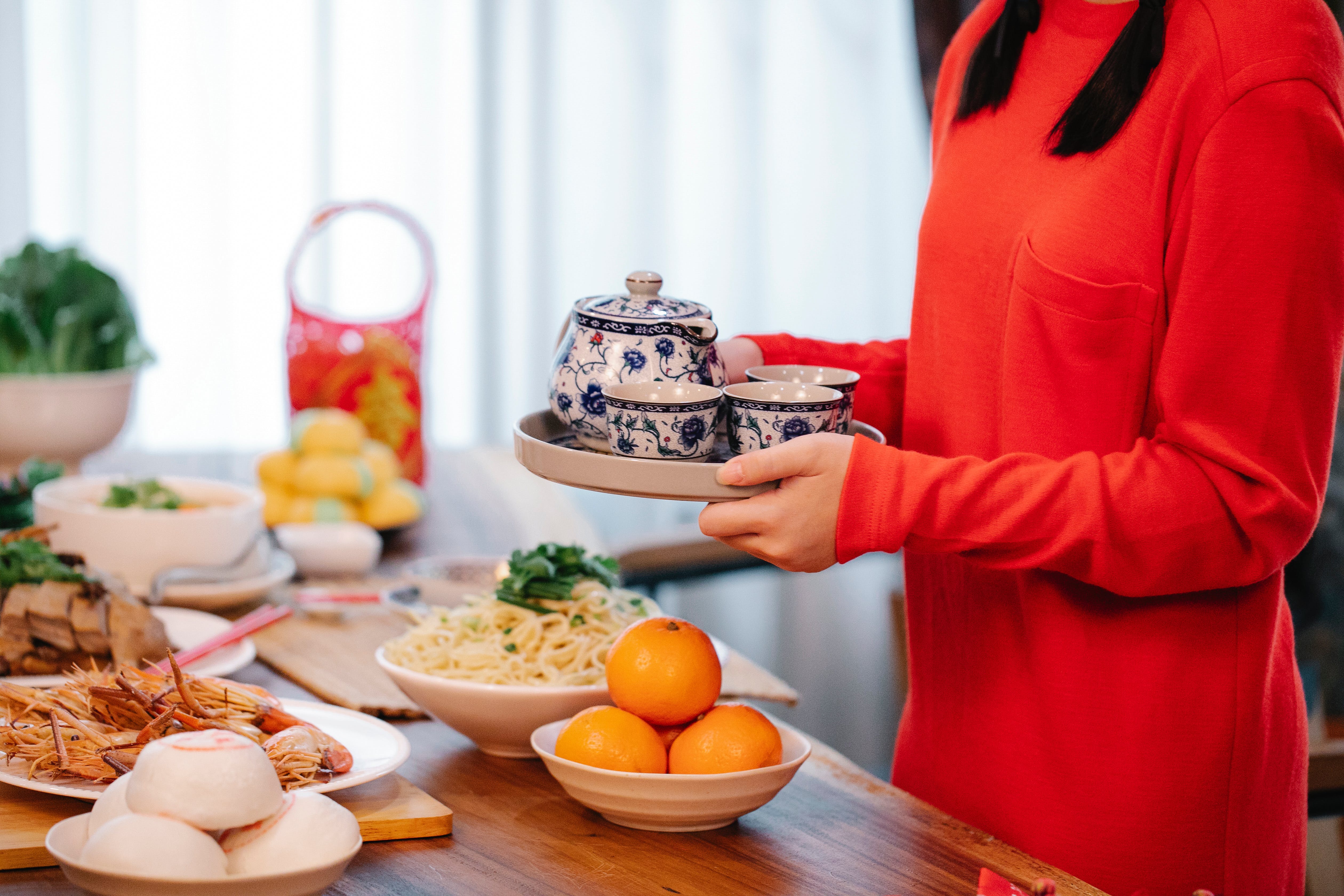
Sinh hoạt ngày Tết
- Văn hóa mặc đẹp ngày Tết: Lịch sử văn hóa mặc đẹp của người Việt trong ngày Tết được thể hiện qua truyền miệng và các ấn phẩm/nghiên cứu cổ. Theo Thạc sĩ văn hóa, Nhà báo Nguyễn Thành Luân, quan niệm chọn màu sắc cho trang phục ngày Tết là để phù hợp với không khí linh thiêng, sum vầy của dịp Tết cổ truyền, kỳ vọng sẽ hòa hợp với vượng khí, tài lộc, từ đó đem đến sự bình an, niềm vui cho bản thân và gia đình. Trước đây, trang phục truyền thống có khác biệt giữa các vùng miền, chẳng hạn người miền Bắc thường chuộng mặc áo dài, người miền Nam mặc áo bà ba. Về màu sắc trang phục, người Việt nhìn chung thích màu vàng hoặc đỏ trong ba ngày Tết với tâm niệm sẽ được nhiều phúc lộc, may mắn, tiền bạc dồi dào và phú quý trong năm mới.

Ngày xưa, trước Tết một thời gian ngắn, các bà các mẹ trong nhà phải thức khuya quay tơ, dệt vải, may áo quần mới cho cả nhà. Công việc này thường kết thúc vào ngày cuối năm. Đến sáng mùng Một Tết, cả nhà dậy sớm, thay quần áo mới để làm lễ gia tiên. Người ta cho rằng cần phải rũ bỏ những cái cũ, cái không may mắn đi theo quần áo cũ và đón một năm mới với nhiều hi vọng và niềm vui mới từ bộ quần áo mới đó.
- Dọn dẹp nhà cửa trước Tết: Do tục kiêng cữ quét nhà trong ngày Tết. Theo quan niệm dân gian, việc quét nhà trong ngày Tết sẽ quét đi theo cả lộc xuân (xác pháo đốt trong đêm giao thừa), người quét nhà sẽ bị rông cả năm; (rông: được hiểu như sự xui xẻo).
- Trả nợ cũ: Đối với nhiều người Việt, dịp tất niên là dịp trả nợ cũ, xóa bỏ xích mích của năm cũ, để hướng tới năm mới vui vẻ hòa thuận hơn.
- Trò chơi dân gian: bịt mắt bắt dê, múa võ, hát bội, hát cải lương, hát chèo, đánh đu, thi leo cột mỡ, đập niêu, chọi gà; bài chòi; chơi tổ tôm điếm; chơi cờ người và nhiều trò dân gian cổ truyền khác.
- Cờ bạc: Ngày xưa các gia đình có nề nếp quanh năm cấm đoán con cháu không được cờ bạc rượu chè nhưng trong dịp Tết thì tam cúc, cờ gánh, cờ nhảy, chắn, tổ tôm, lắc bầu cua,… ai thích trò nào chơi trò ấy. Đến lễ khai hạ (hạ nêu) thì xé bộ tam cúc, cất bộ tổ tôm…hoặc đốt các bộ bài trong lễ hóa vàng.
- Cúng đưa và Hạ nêu: Trong những ngày Tết, người Việt quan niệm rằng có sự hiện diện của Ông Bà tổ tiên nên bàn thờ luôn được thắp hương và cúng cơm mỗi ngày. Thường thì chiều mồng Bốn hay mồng Năm cúng tiễn đưa Ông Bà, chiều mồng Bảy cúng hạ nêu.
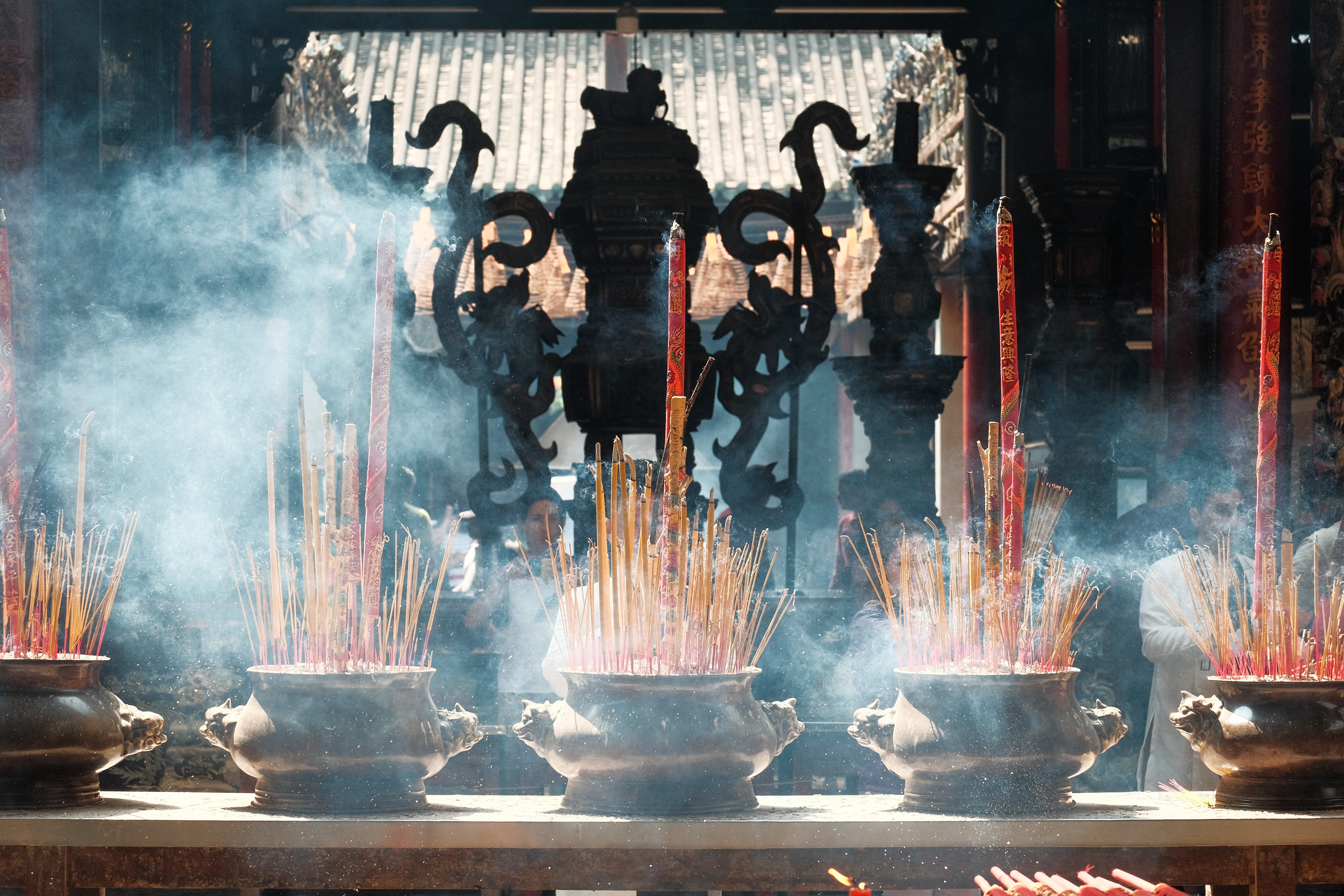
Lễ hội Tết
Các lễ hội truyền thống khác như thi đấu cờ người; đua thuyền, đấu vật, đánh còn, múa lân, múa rồng, thi thả chim bồ câu… tùy theo bản sắc văn hóa của mình, mỗi địa phương đều tổ chức lễ hội ngày Tết với những phần lễ và phần hội chứa đựng những nét văn hóa khác nhau rất phong phú.
Từ năm 2004, tại Thành phố Hồ Chí Minh có Đường hoa Nguyễn Huệ và Đường sách Tết tại phường Bến Nghé, Quận 1 và Hội hoa Xuân thường niên tại công viên Tao Đàn và từ năm 2009, tại Hà Nội có Lễ hội phố hoa Hà Nội tại phường Tràng Tiền và Lý Thái Tổ thuộc quận Hoàn Kiếm để trang hoàng hoa cho khách thưởng ngoạn, tuy không tổ chức hàng năm và phố Ông đồ ở Văn Miếu. Từ năm 2007, tại phường 7 thuộc địa phận thành phố Mỹ Tho, tỉnh Tiền Giang có Đường hoa Hùng Vương tổ chức hàng năm. Ngoài ra còn Đường hoa Bạch Đằng tại Đà Nẵng, Đường hoa Trấn Biên tại Biên Hòa, Đường hoa Bạch Đằng tại Bình Dương, Đường hoa 16/4 tại Ninh Thuận, Đường hoa Phú Mỹ Hưng tại Khu đô thị Phú Mỹ Hưng, Thành phố Hồ Chí Minh.

Ngoài hội Tết, nhiều địa phương còn tổ chức các lễ hội mùa Xuân đặc biệt, chẳng hạn như:
Tại Hà Nội, vào ngày mùng 5 Tết, lễ hội Quang Trung được tổ chức ở gò Đống Đa, thuộc địa phận phường Quang Trung, quận Đống Đa và vào ngày mùng 6 là bắt đầu lễ hội Cổ Loa tại xã Cổ Loa thuộc huyện Đông Anh, lễ hội chùa Hương tại xã Hương Sơn, huyện Mỹ Đức, lễ hội đền Hai Bà Trưng tại huyện Mê Linh.
Các nơi khác có Chợ Âm Dương mùng 4 ở phường Võ Cường, thành phố Bắc Ninh, tỉnh Bắc Ninh và Chợ Viềng mùng 7 tại xã Kim Thái, huyện Vụ Bản và tại thị trấn Nam Giang, huyện Nam Trực, tỉnh Nam Định, Hội xuân Núi Yên Tử ở xã Thượng Yên Công, thành phố Uông Bí, tỉnh Quảng Ninh.
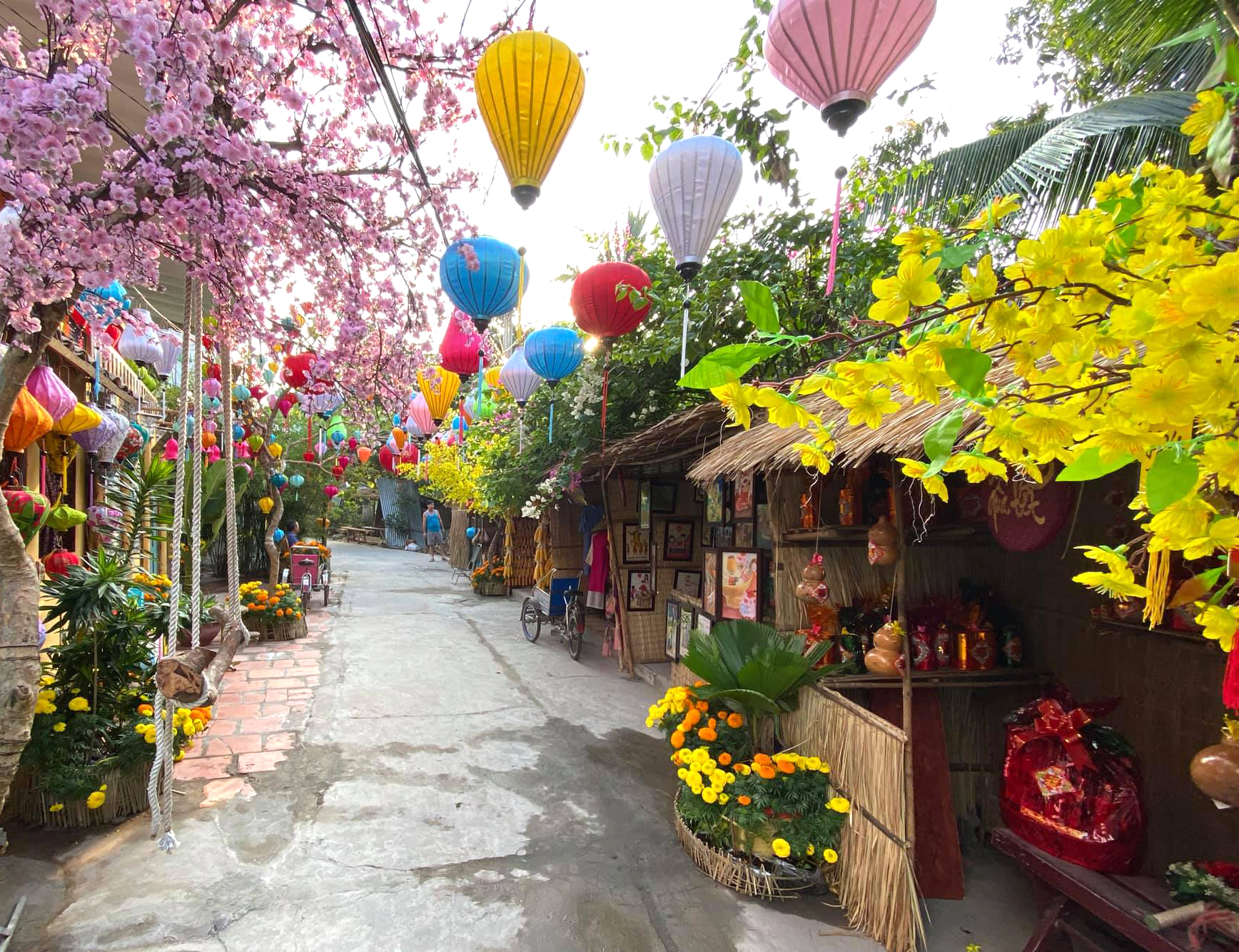
Tại làng cổ Vân Luông thuộc phường Vân Phú nằm ở thành phố Việt Trì, tỉnh Phú Thọ có hội ném đá, gọi là Ném Chài vào ngày 3 tháng giêng. Từ năm 1946 hội Ném Chài thôi tổ chức vì nguy hiểm tính mạng. Năm 2004 lễ hội được phục hồi nhưng thay ném đá bằng túi vải đựng cát.
Tại xã Đông Hoàng, huyện Đông Sơn, tỉnh Thanh Hóa có phiên chợ Chuộng tổ chức vào mùng 6 Tết, người dân đến mua bán một số sản vật nông nghiệp để lấy may, còn thanh niên thì đánh nhau để cầu may.

Tín ngưỡng ngày Tết
- Hoa mai: sau Giao thừa, nếu hoa mai (loại 5 cánh) nở thêm nhiều và đầy đặn thì đó là một điềm may. Và may mắn hơn nữa khi có một hoặc vài bông hoa 6 cánh.
- Cây đào: Nếu có nhiều cánh kép (hoa kép) 3 lớp (hàng) trên đài hoa và có hình dáng như bông hồng thì sẽ có nhiều phúc lộc.
- Cây quất: Nếu cây có nhiều chồi xanh mọc thì năm đó sẽ có nhiều lộc. Nếu có đủ Tứ quý: Quả chín, quả xanh, hoa và lộc thì sẽ may mắn và thành đạt cả năm.
Kiêng kỵ ngày Tết
Theo quan niệm trong ngày đầu năm (Nguyên Đán) mà có nhiều điều tốt đẹp thì cả năm đó chắc chắn sẽ có nhiều điều tốt đẹp đến cho mọi người, có sự giống và khác nhau giữa các miền với niềm tin chính để giữ điều lành trong năm mới. Điển hình, người Việt có một số kiêng kỵ như sau:
Miền Bắc:
- Kỵ mai táng: Ngày Tết Nguyên Đán là ngày mở đầu cho vận hội hanh thông của cả một năm, có ý nghĩa rất thiêng liêng. Gia đình phải tạm gác mối sầu riêng để hoà chung với niềm vui toàn dân tộc. Vì vậy có tục lệ cất khăn tang trong ba ngày Tết. Nhà có đại tang kiêng đi chúc Tết, mừng tuổi bà con, xóm giềng, ngược lại bà con xóm giềng lại cần đến chúc Tết và an ủi gia đình bất hạnh. Trường hợp gia đình có người chết vào ngày 30 tháng chạp mà gia đình có thể định liệu được thì nên chôn cất cho kịp trong ngày đó, đa số các gia đình kiêng để sang ngày mùng Một đầu năm. Trường hợp chết đúng ngày mùng Một Tết thì chưa phát tang vội nhưng phải chuẩn bị mọi thứ để sáng mùng Hai làm lễ phát tang.
- Ngày mùng Một Tết người ta rất kỵ người khác đến xin lửa nhà mình, vì quan niệm lửa là đỏ là may mắn. Cho người khác cái đỏ trong ngày mùng Một Tết thì cả năm đó trong nhà sẽ gặp nhiều điều không may như làm ăn thua lỗ, trong nhà lủng củng, ra đường hay gặp tai bay vạ gió…
- Kiêng cho nước đầu năm vì nước được ví như nguồn tài lộc trong câu chúc tiền vô như nước, nếu cho nước thì coi như mất lộc.
- Trong ngày này, người ta kiêng quét nhà vì theo một điển tích của Trung Quốc, nếu quét nhà thì năm đó gia cảnh sẽ nghèo túng, khánh kiệt. Khi hốt rác trong nhà đổ đi thì thần Tài sẽ đi mất.
- Ngày đầu năm cũng như ngày đầu tháng, người ta rất kiêng kỵ việc vay mượn hay trả nợ, cho vay. Người xưa quan niệm không nên vay tiền hoặc đồ đạc vào những ngày đầu năm mới, điều đó có thể làm chúng ta rơi vào cảnh túng thiếu cả năm, không may mắn.
- Trong ăn uống, người ta kiêng ăn thịt chó, cá mè, thịt vịt… Nếu ăn những thứ này vào dịp đầu năm hay đầu tháng sẽ xúi quẩy.
- Ngoài ra, người già cũng khuyên con cháu trong ngày này không được đánh vỡ bát đĩa, ấm chén, cãi nhau, chửi nhau, kiêng những điều không vui xảy ra với gia đình.
- Người ta thường kiêng khóc lóc, buồn tủi hoặc nói tới điều rủi ro hoặc xấu xa trong dịp Tết.
- Kiêng mặc quần áo màu trắng và đen: Theo quan niệm của người xưa, màu trắng và đen là màu của tang lễ, chết chóc, vì vậy những ngày đầu năm thì phải mặc trang phục với những màu sắc sặc sỡ và thu hút sự chú ý, tạo nên sự phấn khởi và vui vẻ để đón chào năm mới, như: màu hồng, đỏ, vàng, xanh…
- Kiêng nói to, cãi nhau, nói xấu hay mắng người khác.
- Kiêng đi chúc Tết vào sáng Mồng Một Tết nếu không được gia chủ mời vì sợ sẽ mang đến điều không tốt đẹp cho chủ nhà trong năm mới. Theo phong tục xông đất, người đầu tiên bước vào nhà ai trong ngày mùng một Tết chính là người quyết định đem lại sự may mắn hoặc xui xẻo cho gia đình ấy trong cả năm.
- Ngày mồng 5 tháng giêng Âm lịch là ngày nguyệt kỵ, người Việt thường tin rằng ngày này không thích hợp cho xuất hành.
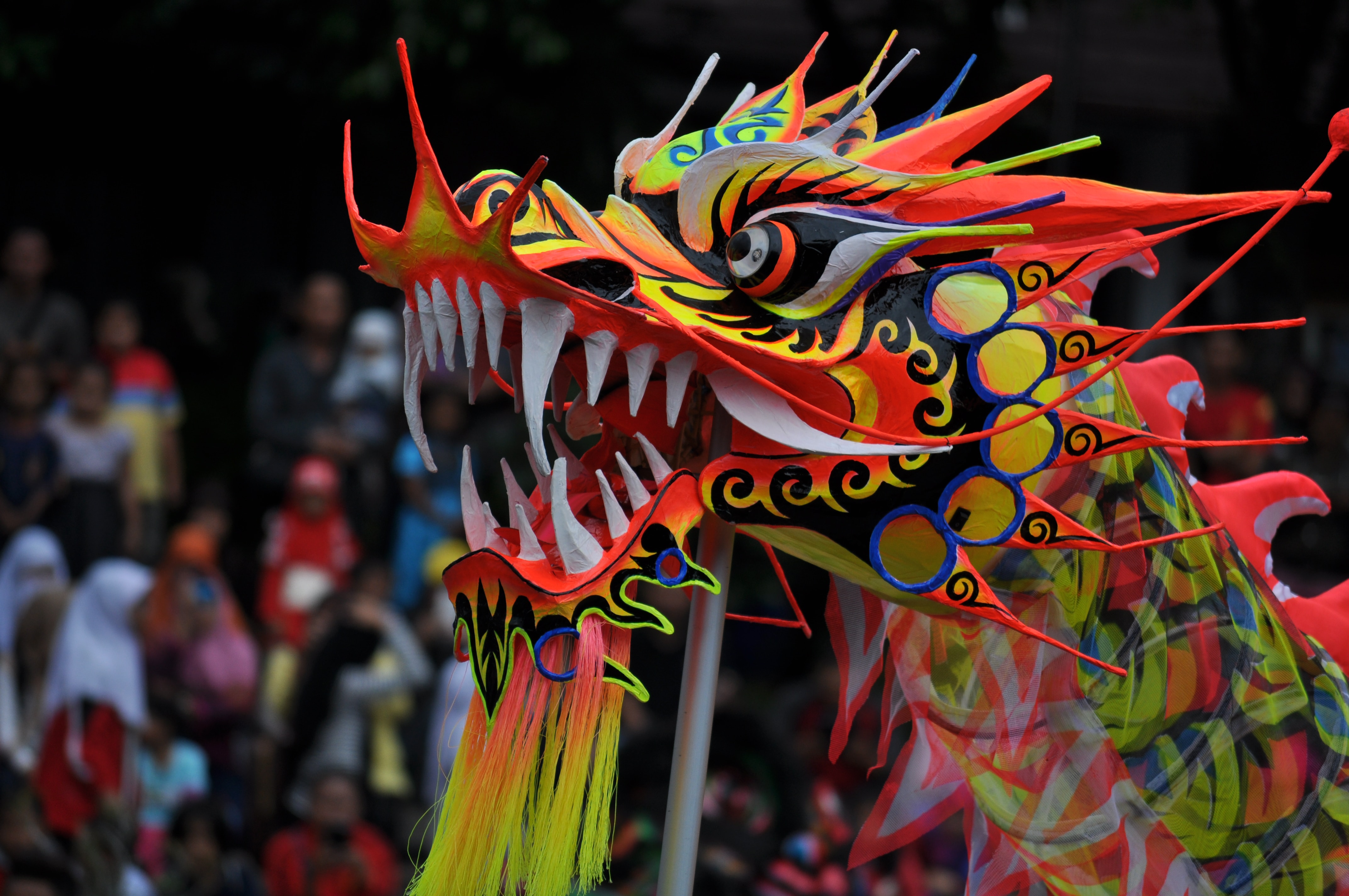
Miền Trung:
- Kiêng ăn các món chế biến từ tôm vì sợ năm mới đi giật lùi như tôm.
- Kiêng ăn trứng vịt lộn, thịt vịt bởi đầu năm mà ăn món này thì sẽ xúi quẩy.
- Một số vùng kiêng mặc đồ trắng suốt tháng Giêng vì đó là biểu tượng của tang tóc.
- Kiêng quét nhà vì đó là xua đuổi thần Tài Lộc đầu năm.
- Tránh nhăn nhó, cau có, khóc lóc và cãi vã trong ngày đầu năm vì quan niệm nó làm cả năm sẽ gặp chuyện không may.
Miền Nam:
- Kiêng để cối xay gạo trống vào ngày đầu năm vì đó là tượng trưng cho việc thất bát, mất mùa năm tới. Người ta thường đổ một ít lúa vào cối xay, ngụ ý cầu mong năm mới lúa gạo đầy tràn.
- Cũng như trên, kiêng kỵ để thùng gạo, hũ đường muối… thiếu hụt vì sợ cả năm đều bị thiếu thốn.
- Gia chủ hễ có khách đến là dọn cỗ, mời uống rượu, ăn bánh. Khách không được từ chối bữa ăn, dù no cũng phải nhấm nháp chút ít.
- Kiêng các việc làm đổ bể hư hỏng, hoặc tranh cãi to tiếng lẫn nhau.
- Thường kiêng khóc lóc, buồn tủi hoặc nói tới điều rủi ro hoặc xấu xa trong dịp Tết.
- Kiêng cữ quét nhà ngày đầu năm vì quan niệm quét tiền tài tốt đẹp ra ngoài. Ngoài ra người dân sẽ tắm gội cơ thể trước ngày đầu năm để tránh phải gột rửa may mắn trong năm mới.

Tết của người Việt xa quê hương
Người Việt sống ở nước ngoài nếu không có điều kiện về Việt Nam trong dịp Tết cũng tổ chức những hoạt động trong dịp Tết Âm lịch mang đậm truyền thống văn hóa Việt. Nhiều nơi có đông người Việt sinh sống như tại Mỹ, Úc, Pháp, Nga, Đức… người Việt sinh sống tại đây ăn Tết với bánh chưng gói và bán sẵn cũng như các món ăn được đưa từ Việt Nam sang như nước mắm Phan Thiết, cho đến củ tỏi, củ hành, rau húng, rau thơm… Nhiều gia đình cũng lập bàn thờ Gia tiên, bàn thờ cũng có mâm ngũ quả, bánh chưng, mứt Tết, hương trầm, rượu, kim ngân… có gia đình treo cả câu đối, và một lọ hoa tươi giống như đón Tết cổ truyền tại Việt Nam.
Nhiều nơi, cộng đồng và các hội đoàn người Việt, các chùa Phật giáo, các giáo xứ Công giáo có tổ chức Hội Tết và ca nhạc văn nghệ Tết. Sứ quán Việt Nam và các lãnh sự quán Việt Nam tại nước ngoài cũng có tổ chức các hoạt động vui Tết đón xuân cho kiều bào như các buổi tiệc nhỏ hay văn nghệ Tết, như tại Thái Lan, Canada… Các khu thương xá của người Việt, các khu chợ Việt như tại Little Saigon ở tiểu bang California, Hackney (hay được gọi là khu Việt Nam tại Luân Đôn), Cabramatta (còn gọi là Saigonmatta) ở Sydney, Úc… cũng có bán các mặt hàng mứt, bánh chưng, hạt sen, lá dong tươi để gói bánh chưng, bánh tét, gạo nếp, xôi gấc, dừa khô, măng khô… được chuyển từ Việt Nam sang. Chợ hoa cũng có bán cành đào, cành mai, dưa hấu nhập từ các nước châu Á sang để trưng bày trong nhà.

Tại Mỹ, trước Tết Nguyên đán, kiều bào và du học sinh thường kết hợp tổ chức lễ hội mừng Tết lớn cho cộng đồng người Việt và cả cộng đồng người bản xứ. Đặc biệt hơn ở Việt Nam là nơi đây, vào ngày Tết được quyền đốt pháo nên các khu chợ Việt như chợ Lion, khu Little Saigon tràn ngập xác pháo giữa đêm giao thừa cho đến trọn ngày mồng 1 Tết. Hàng năm, vào ngày Tết, đều có các cuộc diễn hành Tết của cộng đồng người Việt tại khắp nơi, với các xe hoa và đoàn múa, lớn nhất là tại San Jose do Hội Diễn hành Xuân (Vietnamese Spring Festival) tổ chức, với sự kết hợp của nhiều hội đoàn, tổ chức.
Hội chợ Tết cũng diễn ra khắp nơi với các phần đốt pháo, múa lân, ca nhạc văn nghệ, tái hiện các làng quê Việt xưa, thi đố vui để học, thi hoa hậu áo dài, thi đấu võ, thi thiếu nhi tài năng, thi gói bánh chưng bánh tét… Như tại Garden Grove, California, công viên Garden Grove Park và trường Bolsa Grande High School…
Tại bang California, vào cuối tháng 9/2022, ông Gavin Newsom, Thống đốc bang California, đã ký luật chính thức công nhận Tết Nguyên đán là một ngày lễ của bang.
Tại Úc, hàng năm, vào ngày Tết Nguyên Đán, đều có các cuộc diễn hành Tết và Hội Tết của cộng đồng người Việt tại khắp nơi, mang đậm bản sắc văn hóa Việt, như tại Sydney, Melbourne với hàng trăm ngàn người tham dự. Các hội Tết cũng có các món ăn Việt, những trò chơi dân gian, những gian hàng chợ Tết, bắn pháo hoa, múa lân, tái hiện văn hóa Việt xưa…
Sources: Wikipedia, Internet. Photos by Khang Chu Long, Quang Vinh Nguyen, ShutterStock, Pexels, Pixabay, Unsplash

Xem Tours: Du Xuân đón Tết cùng Thiên Xuân
Thiên Xuân Travel
Park 2, 208 Nguyen Huu Canh Street, Ward 22,
Binh Thanh District, Ho Chi Minh City, Vietnam
📨 booking@thienxuantravel.com
☎️ +84 888 890 898 — 0938 558 228
Office in the United States
14114 Beech Glen Dr, Houston, TX 77083
☎️ +1 (281) 906-2744

